MINCÉIRS
Mincéirs are a traditionally nomadic ethnic minority indigenous to Ireland, referred to by the Irish Government and the settled population as Irish Travellers. The Mincéir is a true name of the Irish travelling community in their own language which is called Cant or Gammon. Although the Irish Travellers speak English, the lingo they use amongst each other at times is Cant/Gammon. The name Traveller was put upon them because of their nomadic identity. Back in the 5th century the term these groups of people were called Whitesmiths because of their association and skills as tin-smithing. Over the years the Irish Travellers have been called Tinkers, Knackers and Gyspy by some of the settled population which the Irish Travellers have found very offensive and racial. Any settled person who is not racist would use the term Irish Traveller or Travellers which is politically correct. Unfortunately many of the Irish Travellers are subjected to the continuous use of these offensive labels.
I would like to mention a few facts and some background information on this minority group of people who live mostly in Ireland I will refer to them as Irish Travellers or Travellers for short. As of publishing this book approximately 35,000 Travellers live in Ireland, less than 1% of the Irish population.
Most of the Irish Travellers live in halting sites which have been designated by the Irish government in 1968. The government were not happy with the Irish Travellers roadside camping, so they set up the so called temporary sites. Some families chose to stay and never moved, there are many of these halting sites which I have been privy to visit, but some are overcrowded due to large families and lack proper updated facilities. This in turn has forced some families to set up their own camps in disused fields, but because seen as illegal encampments the local councils are constantly trying to move the families on, and will not provide basic needs such as fresh water, electricity or sanitation. There is a small amount of Irish Travellers who wish to settle and have gone on the housing list. This can also be a tricky situation settled neighbours usually oppose having a travelling family living on their road, these leads to tension and racial abuse at times. So this discourages many families from settling.
While education is mandatory for all children living in Ireland, the Irish Travellers usually drop out by the age of 15, a lot of this is due to the children being needed at home to tend to the younger or some just find mainstream school boring and not suited to their culture. I have heard from a home economics teacher that her class is probably the most popular subject amongst the female Travellers as cooking is necessary. There have also been some fantastic stories of Irish Travellers finishing 3rd level education and obtaining great careers such as Dr. Sindy Joyce. Dr. Joyce is the first Irish Traveller to graduate with a PhD and was recently appointed by our President as one of his advisors for council of the state in 2019.
Vice-Chair of the National Traveller Mental Health Mags Casey explained that the causes of mental health issues affecting Travellers are Complex:
“Clearly the issues that affect all Travellers-such as racism and exclusion matters relating to identity, sexuality, addiction, as well as unemployment, education and accommodation have a profound impact on the community’s mental health”.
The following information is an excerpt from the National Traveller Mental Health Network officially launched in NUI Galway in 2019:
82 % of the Irish Traveller community have been affected by suicide.
90% Of Travellers agree that mental health issues are common amongst their community
56% of Travellers report poor physical and mental health restricts their normal daily activities.
In March 2017, after 25 years of campaigning, finally Irish Travellers won formal recognition as a distinct ethnic group within the State. On that day the former director of the Irish Travellers Movement, Bridgid Quilligan stated:
“We want every Traveller in Ireland to be proud of who they are and to say that “we are not a failed set of people. We have our own unique identity, and we shouldn’t take on all the negative aspects of what people think about us. We should be able to be proud and for that to happen our State needed to acknowledge our identity and our ethnicity, and they’re doing that today.”
What I have written is brief with some facts about these fascinating people who have made me feel utterly welcome at all times for the past 11 years. I am clearly not a writer, so I have recorded some facts and a brief synopsis into the life of Irish Travellers. I hope my photographs portray what I could not begin to write, and captured some of the Irish Travellers Lifestyle and Culture that is steeped in traditions, full of colour, celebrations, and hardships.
Joseph-Philippe Bévillard, September 2020
I would like to mention a few facts and some background information on this minority group of people who live mostly in Ireland I will refer to them as Irish Travellers or Travellers for short. As of publishing this book approximately 35,000 Travellers live in Ireland, less than 1% of the Irish population.
Most of the Irish Travellers live in halting sites which have been designated by the Irish government in 1968. The government were not happy with the Irish Travellers roadside camping, so they set up the so called temporary sites. Some families chose to stay and never moved, there are many of these halting sites which I have been privy to visit, but some are overcrowded due to large families and lack proper updated facilities. This in turn has forced some families to set up their own camps in disused fields, but because seen as illegal encampments the local councils are constantly trying to move the families on, and will not provide basic needs such as fresh water, electricity or sanitation. There is a small amount of Irish Travellers who wish to settle and have gone on the housing list. This can also be a tricky situation settled neighbours usually oppose having a travelling family living on their road, these leads to tension and racial abuse at times. So this discourages many families from settling.
While education is mandatory for all children living in Ireland, the Irish Travellers usually drop out by the age of 15, a lot of this is due to the children being needed at home to tend to the younger or some just find mainstream school boring and not suited to their culture. I have heard from a home economics teacher that her class is probably the most popular subject amongst the female Travellers as cooking is necessary. There have also been some fantastic stories of Irish Travellers finishing 3rd level education and obtaining great careers such as Dr. Sindy Joyce. Dr. Joyce is the first Irish Traveller to graduate with a PhD and was recently appointed by our President as one of his advisors for council of the state in 2019.
Vice-Chair of the National Traveller Mental Health Mags Casey explained that the causes of mental health issues affecting Travellers are Complex:
“Clearly the issues that affect all Travellers-such as racism and exclusion matters relating to identity, sexuality, addiction, as well as unemployment, education and accommodation have a profound impact on the community’s mental health”.
The following information is an excerpt from the National Traveller Mental Health Network officially launched in NUI Galway in 2019:
82 % of the Irish Traveller community have been affected by suicide.
90% Of Travellers agree that mental health issues are common amongst their community
56% of Travellers report poor physical and mental health restricts their normal daily activities.
In March 2017, after 25 years of campaigning, finally Irish Travellers won formal recognition as a distinct ethnic group within the State. On that day the former director of the Irish Travellers Movement, Bridgid Quilligan stated:
“We want every Traveller in Ireland to be proud of who they are and to say that “we are not a failed set of people. We have our own unique identity, and we shouldn’t take on all the negative aspects of what people think about us. We should be able to be proud and for that to happen our State needed to acknowledge our identity and our ethnicity, and they’re doing that today.”
What I have written is brief with some facts about these fascinating people who have made me feel utterly welcome at all times for the past 11 years. I am clearly not a writer, so I have recorded some facts and a brief synopsis into the life of Irish Travellers. I hope my photographs portray what I could not begin to write, and captured some of the Irish Travellers Lifestyle and Culture that is steeped in traditions, full of colour, celebrations, and hardships.
Joseph-Philippe Bévillard, September 2020
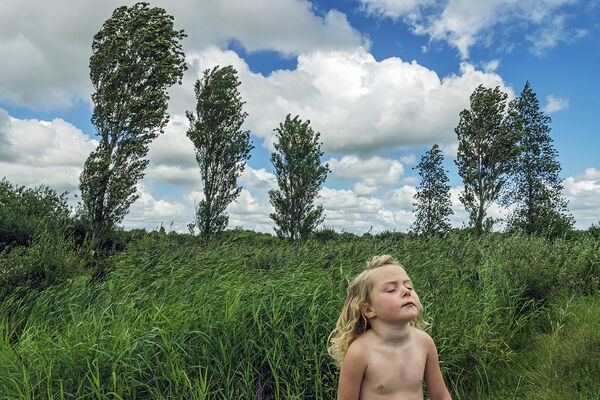
Katie, Clare, Ireland 2018
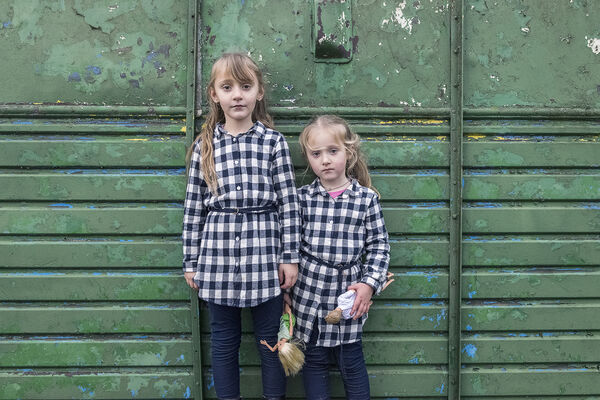
Kathleen and Melissa, Tipperary, Ireland 2018
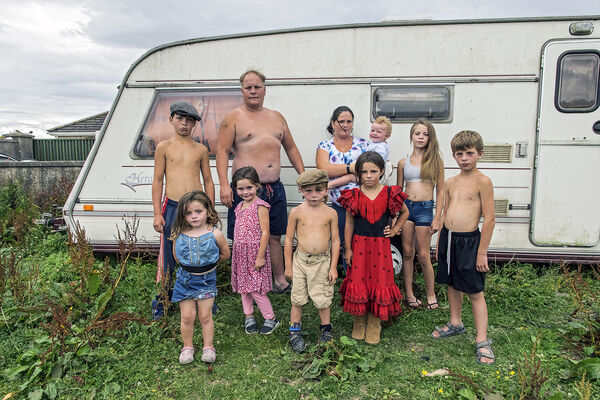
Reilly Family, Tipperary, Ireland 2018
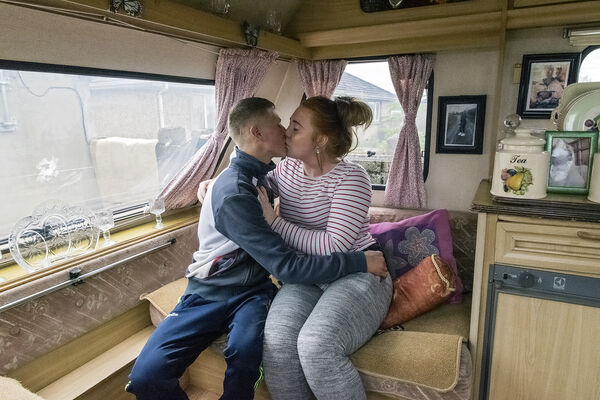
William and Pricilla Kissing in their Caravan, Tipperary, Ireland 2018

Ned and A Horse, Limerick, Ireland 2018
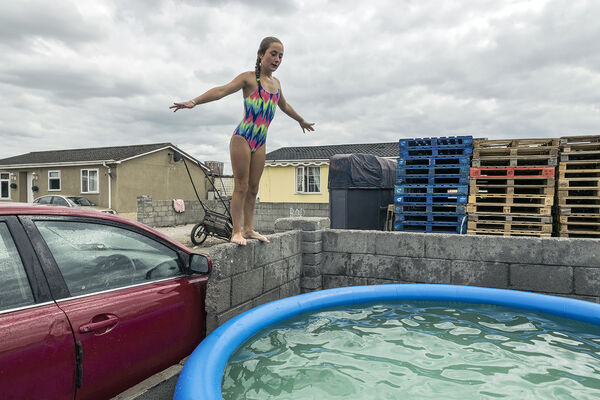
Ellie's 'Titanic Moment', Limerick, Ireland 2018
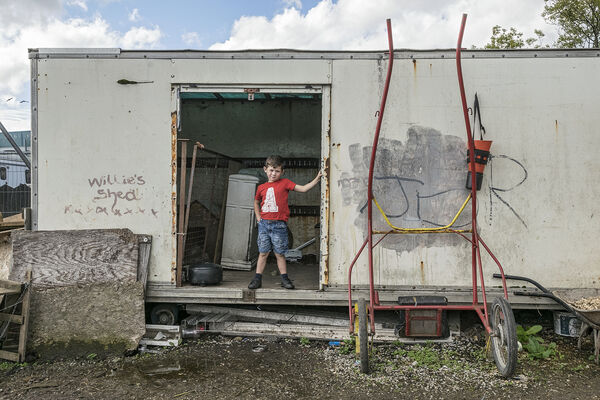
Willie's Shed, Limerick, Ireland 2018

Charlotte and Peter, Tipperary, Ireland 2018

Batman Camera, Cork, Ireland 2018
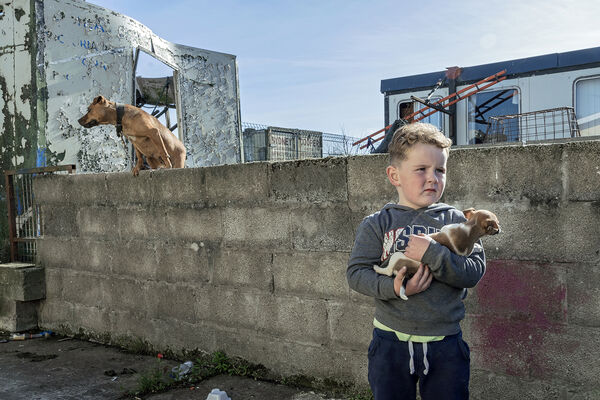
Fono with A Puppy, Limerick, Ireland 2018
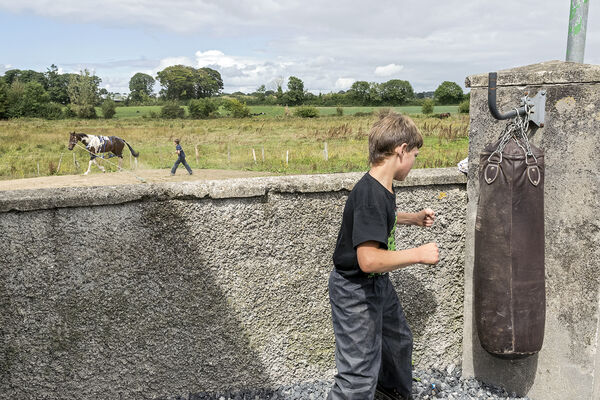
Boxing and Breaking, Tipperary, Ireland 2018

Ann Eating Chips at Ballinasloe Fair, Galway, Ireland 2018

Lurcher in Scrapyard, Limerick, Ireland 2018
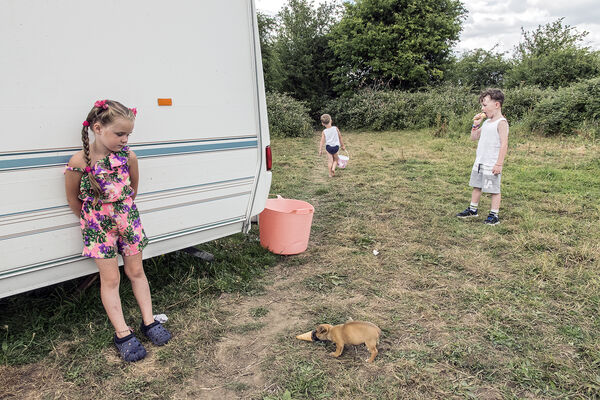
Ice Cream, Limerick, Ireland 2018

Katelyn, Tipperary, Ireland 2018

Patrick Throwing Stick, Cork, Ireland 2018
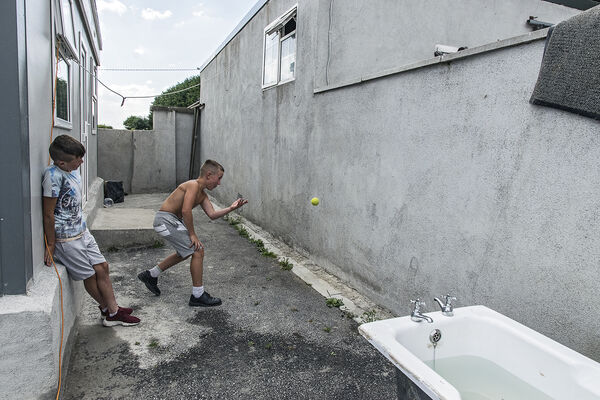
Handball, Tipperary, Ireland 2018

Rocky and Priscilla, Tipperary, Ireland 2018
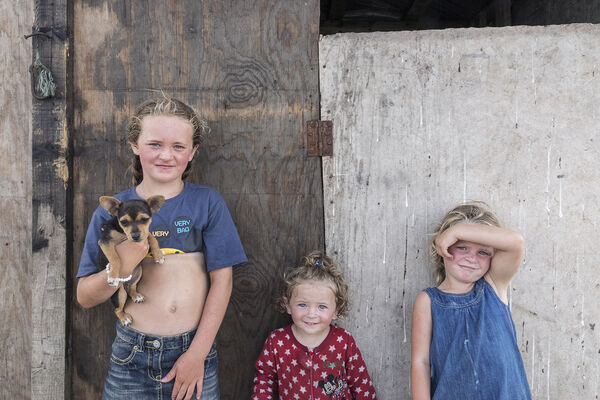
Katelyn, Teresa and Cheyenne, Tipperary, Ireland 2018

Kathleen and Caroline, Puck Fair, Kerry, Ireland 2018
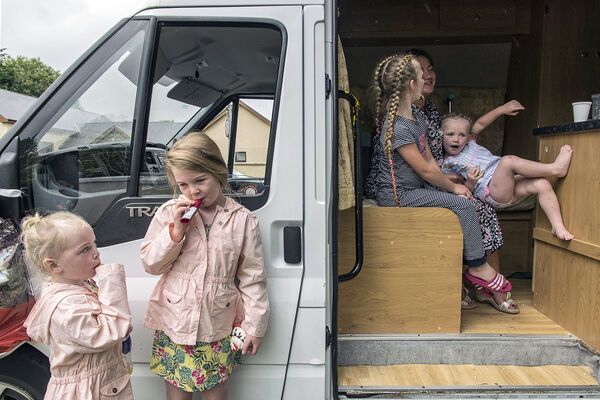
Morning Breakfast, Puck Fair, Kerry, Ireland 2018

Rita-Marie, Clare, Ireland 2018
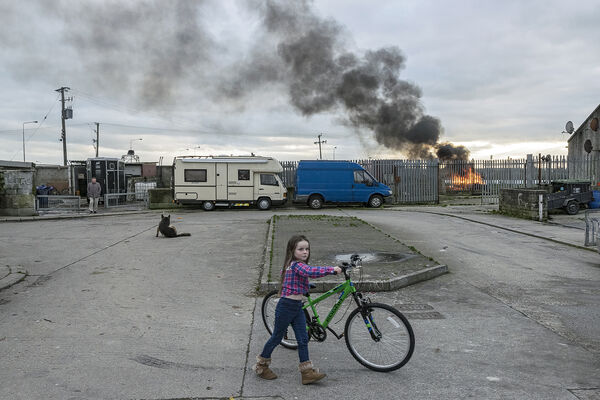
Girl with Bicycle, New Year's Eve 2018, Limerick, Galway, 2018

Faulkners Girls, Limerick, Ireland 2018
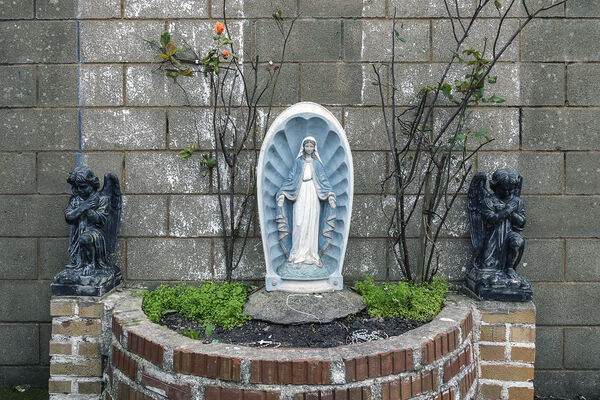
Shrine, Cork, Ireland 2018
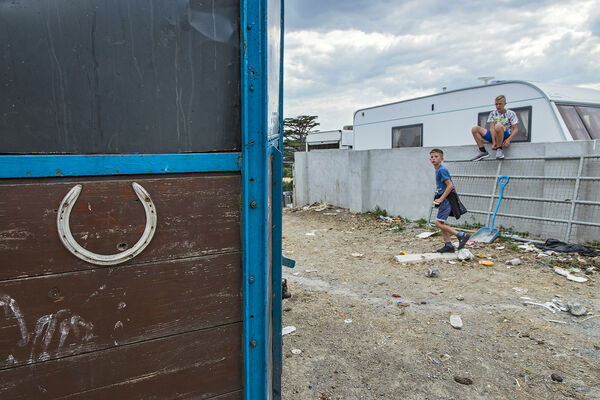
Horseshoe, Tipperary, Ireland 2018
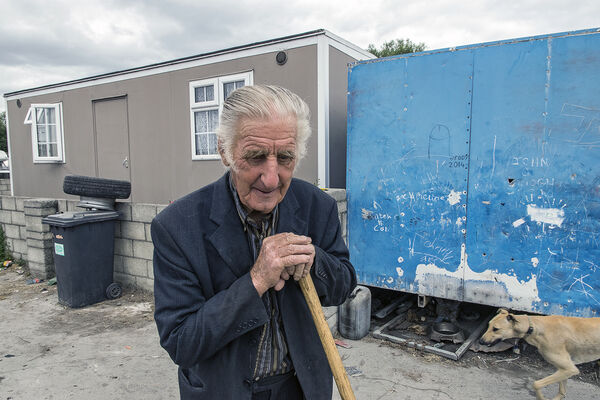
John, 85 years old, Limerick, Ireland 22018

Jump Rope, Tipperary, Ireland 2018
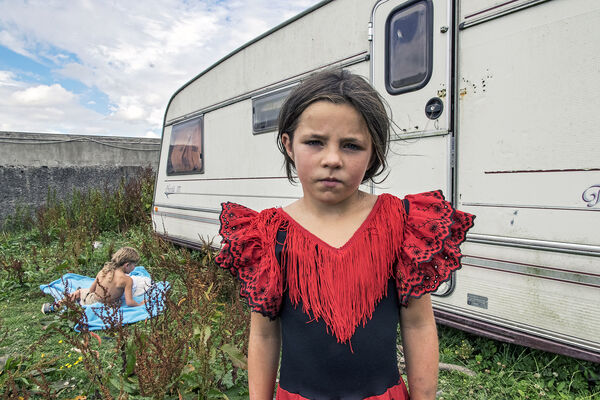
Nikita in Red Gypsy Dress, Tipperary, Ireland 2018
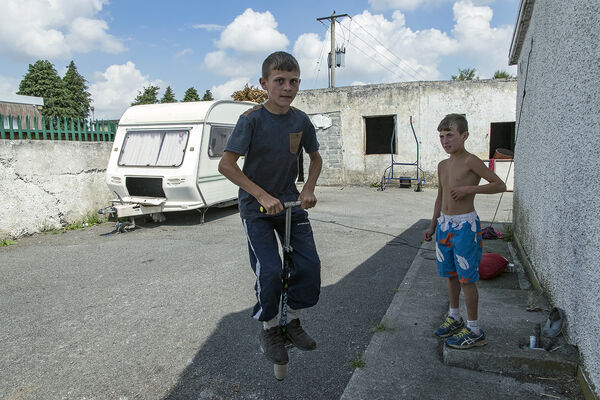
Pogo Stick, roadside campsite, Tipperary, Ireland 2018
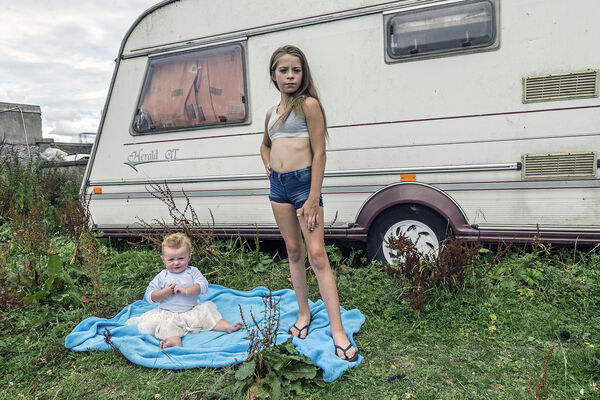
Prisciilla and younger sister Maggie, roadside campsite, Tipperary, Ireland 2018
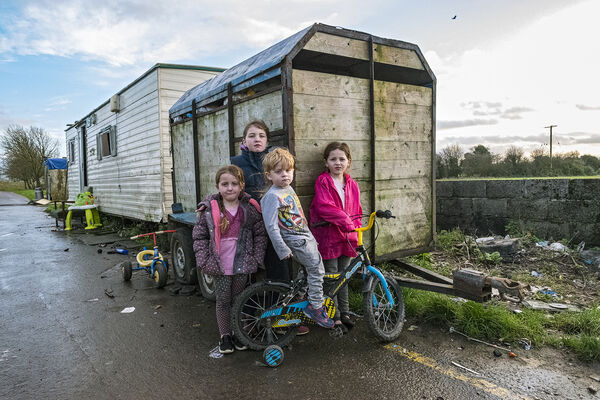
Reilly Siblings, roadside campsite, Tipperary, Ireland 2018

Donoghue Sisters, Limerick, Ireland 2018
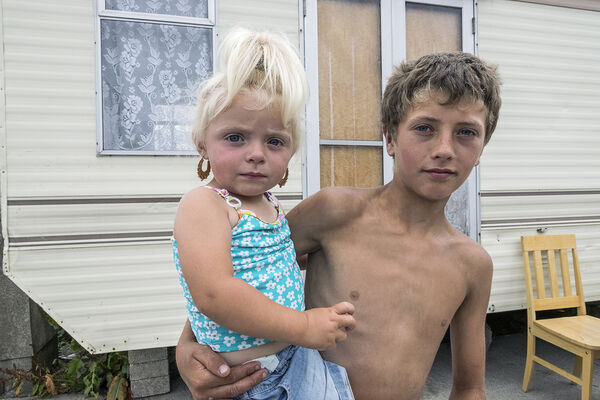
Charlotte and Tommy, roadside campsite, Tipperary, Ireland 2018
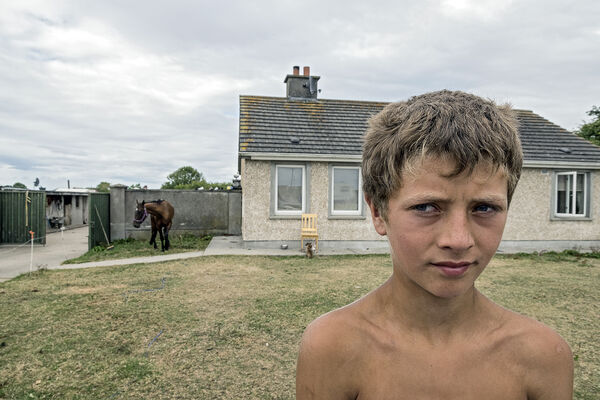
Tommy, roadside campsite, Tipperary, Ireland 2018
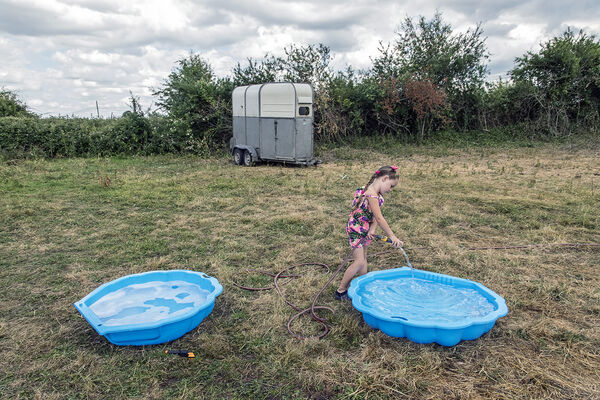
Two Pools, roadside campsite, Limerick, Ireland 2018
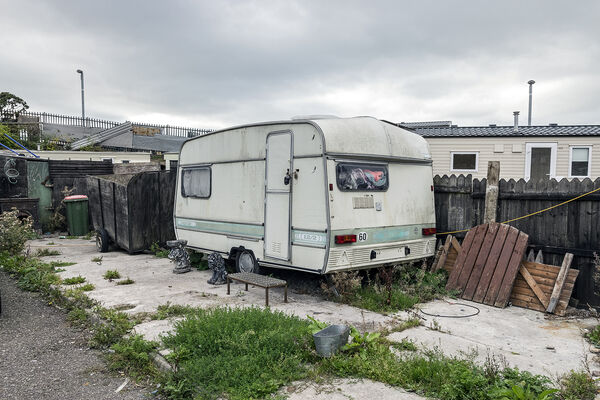
Vintage Caravan, halting site, Cork, Ireland 2018
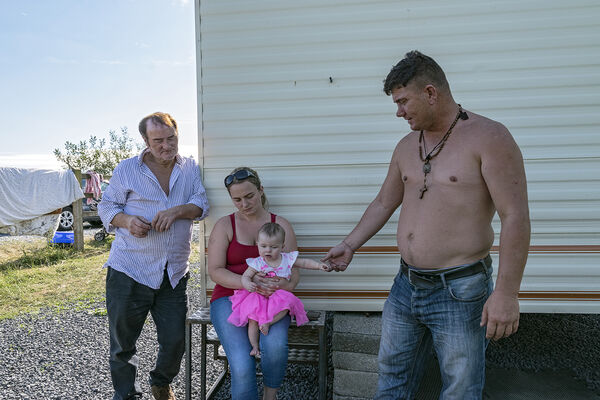
Family, roadside campsite, Clare, Ireland 2018
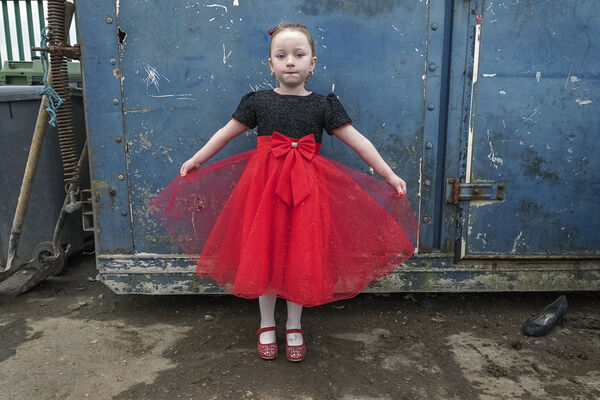
Alesha's Red Dress on New Year's Day, roadside campsite, Tipperary, Ireland 2019

Neddy and Bridget, halting site, Galway, Ireland 2019
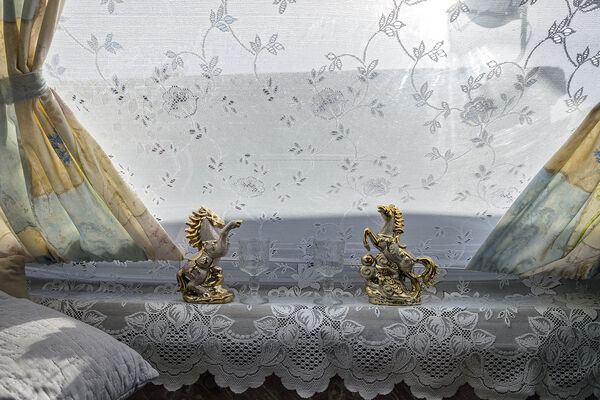
Gold Gypsy Horses, roadside campsite, Tipperary, Ireland 2019

Charlotte, roadside campsite, Tipperary, Ireland 2019
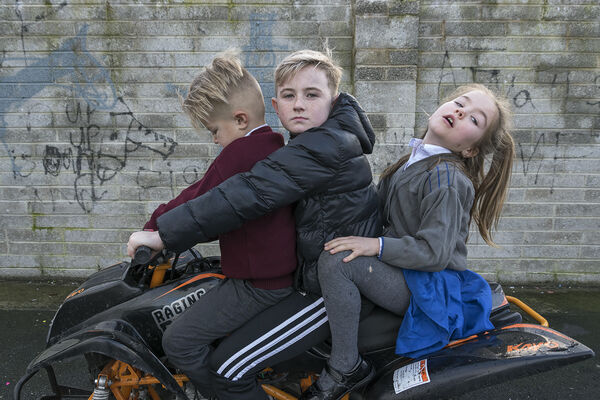
Faulkner Siblings on quad, halting site, Limerick, Ireland 2019

Nikita trying her new flamenco dress, roadside campsite, Tipperary, Ireland 2019

Blue Dress, Wexford, Ireland 2019
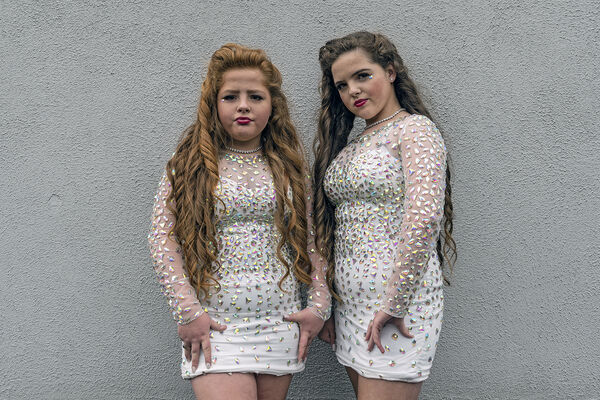
Bridget and Margaret, Fraternal Twins, Wexford, Ireland 2019
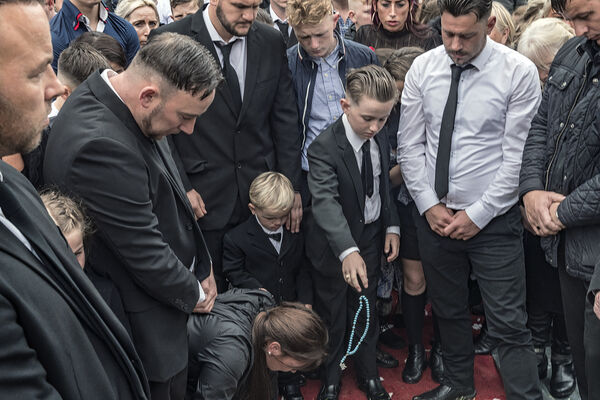
Farewell Gift at a funeral, Limerick, Ireland 2019

Wife at her late husband's coffin, Limerick, Ireland 2019

Last Kiss, Limerick, Ireland 2019
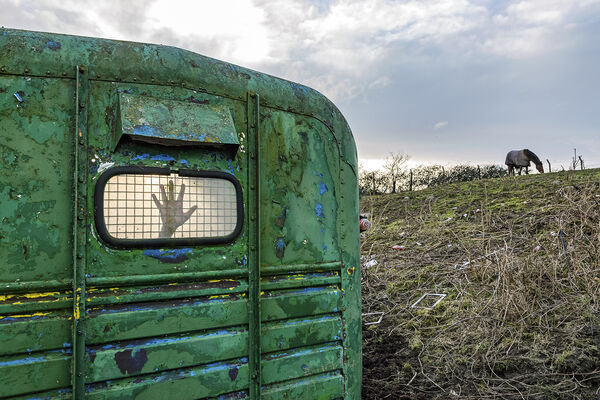
The Hand, Tipperary, Ireland 2019
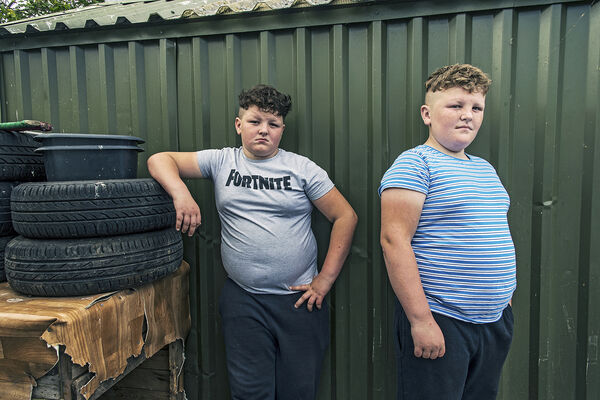
Timmy-Lee and Johnny, Fraternal Twins, Limerick, Ireland 2019
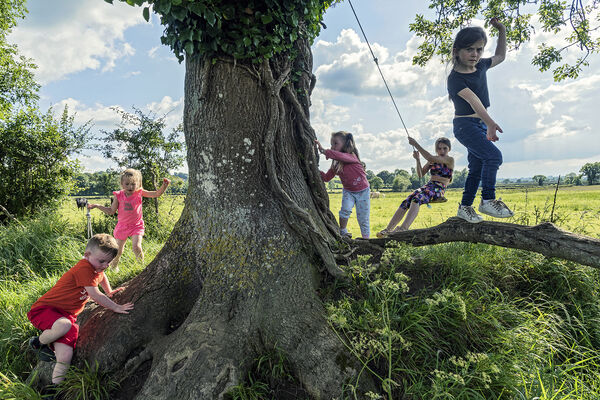
Caseys Children around Big Old Tree, Limerick, Ireland 2019
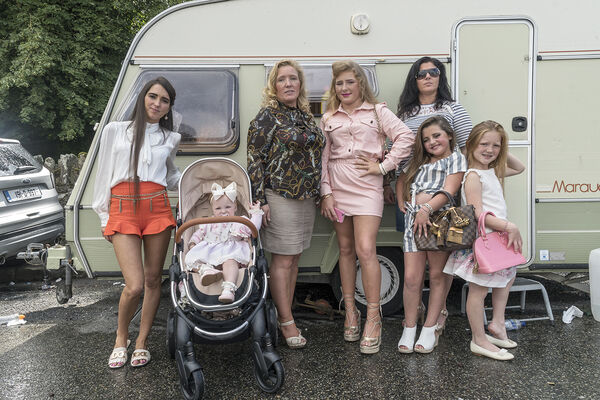
The Connors, Borris Fair, Carlow, Ireland 2019

Pink Fur, Galway, Ireland 2019

Ned in His Suit, Tipperary, Ireland 2019

Pellet Gun, Puck Fair, Kerry, Ireland 2019
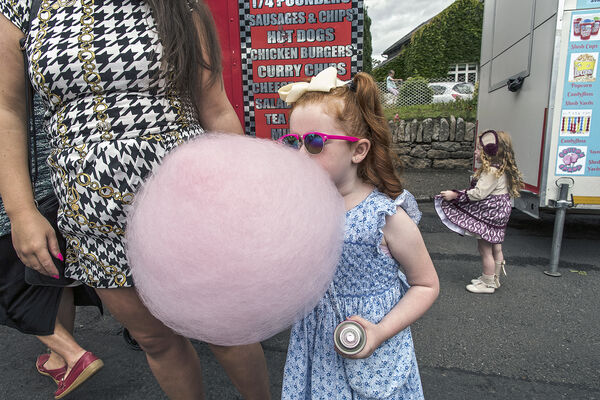
Pink Cotton Candy, Borris Fair, Carlow, Ireland 2019
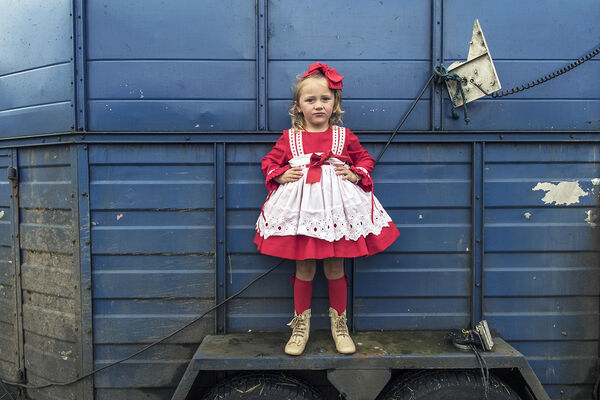
Red and White Dress, Galway, Ireland 2019
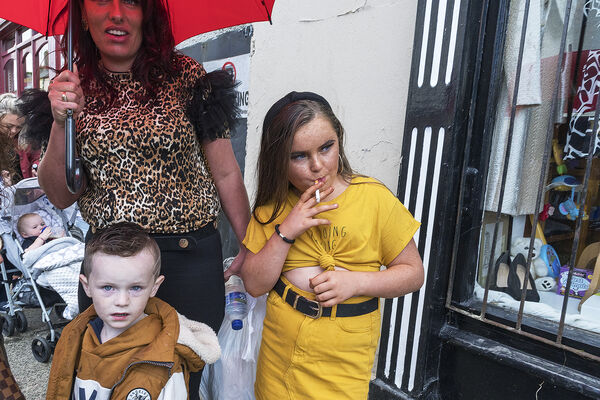
Toy Cigarette, Galway, Ireland 2019
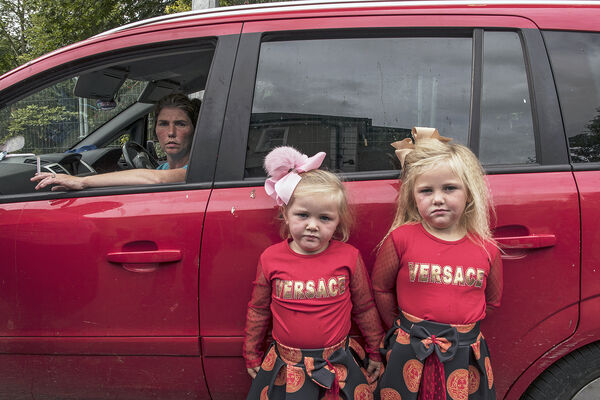
Versace, Carlow, Ireland 2019
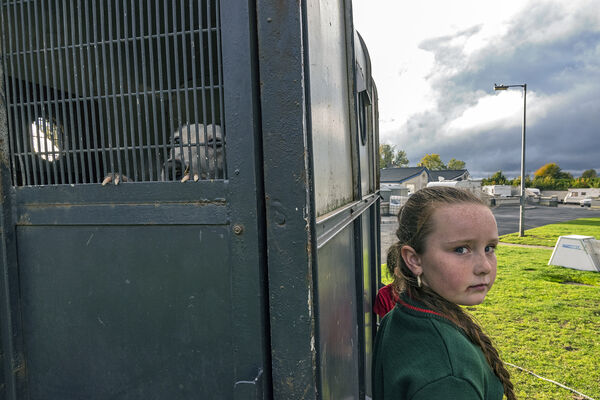
Claws, Offaly, Ireland 2018
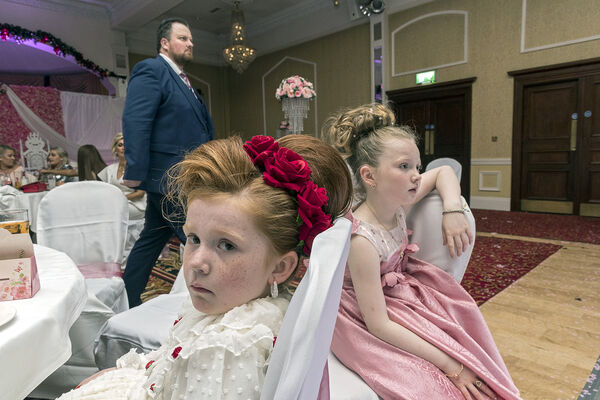
Little Bridesmaid, Galway, Ireland 2019
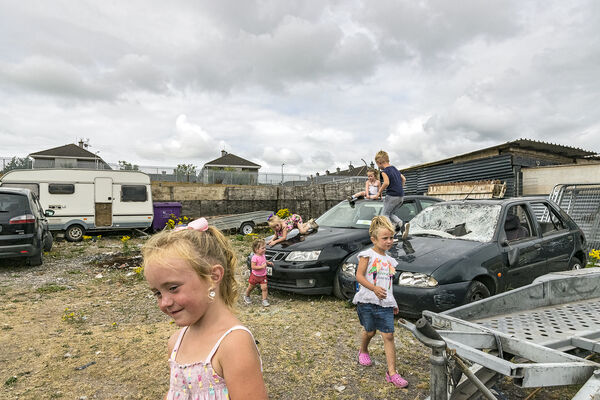
Children Playing in Scrap Yard, Cork, Ireland 2018
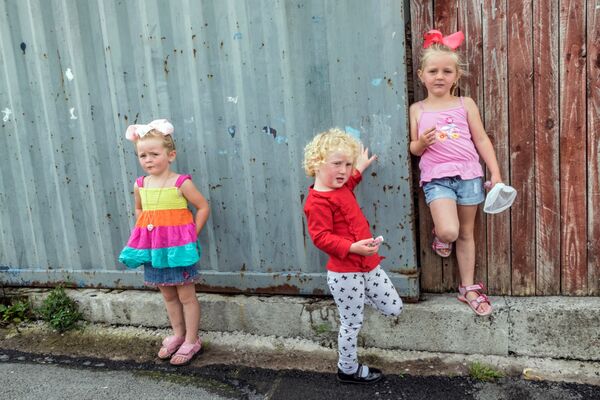
McCarthy Girls, Cork, Ireland 2018
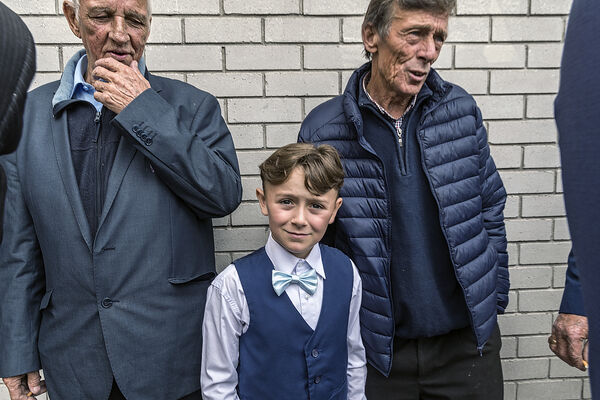
Boy with Turquoise Bow Tie, Wexford, Ireland 2019
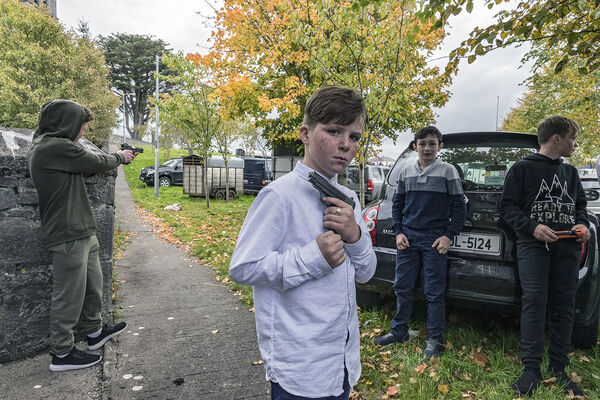
Boys with Pellet Guns, Galway, Ireland 2019
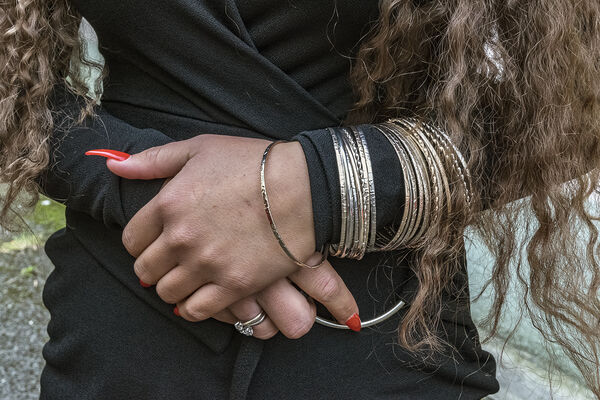
Bracelets, Galway, Ireland 2018
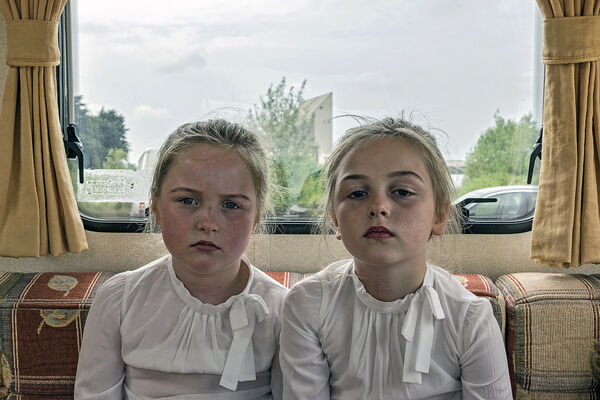
Bridget and Maggie, Fraternal Twins, Limerick, Ireland 2018
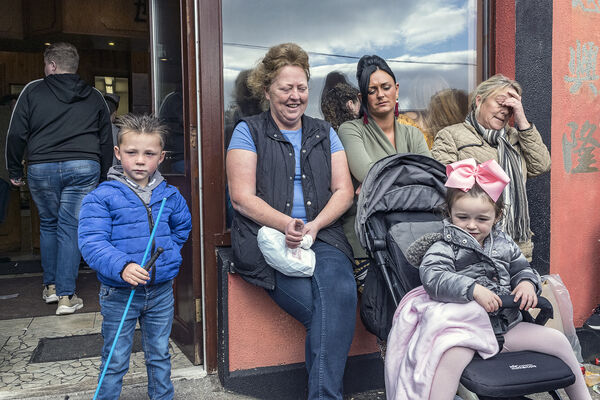
Connors Family, Galway, Ireland 2018

Mrs. Connors and Her Daughters, Galway, Ireland 2018
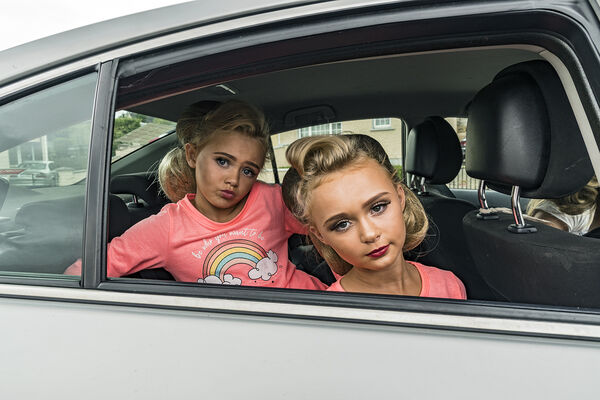
Connors Sisters before Wedding, Wexford, Ireland 2019
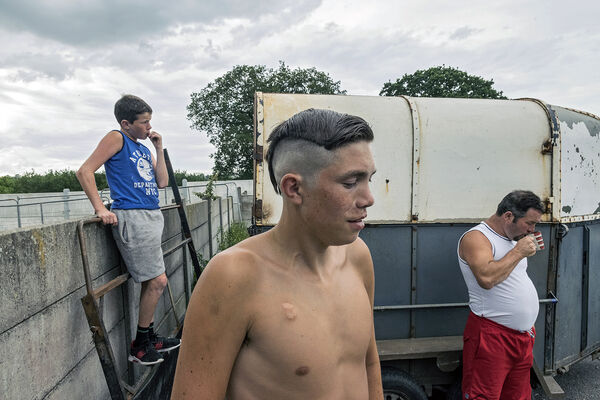
Deep Thoughts, Tipperary, Ireland 2018
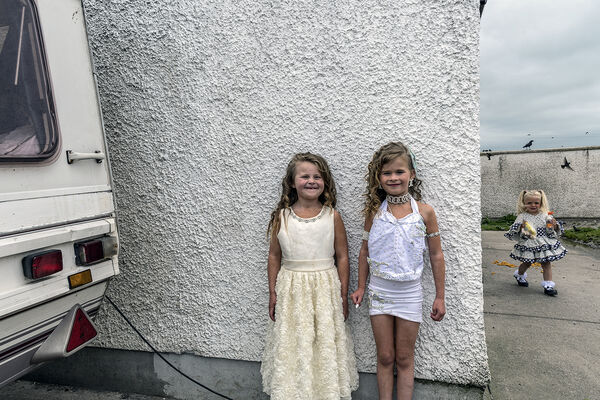
Reilly Sisters, Cashel, Tipperary 2019
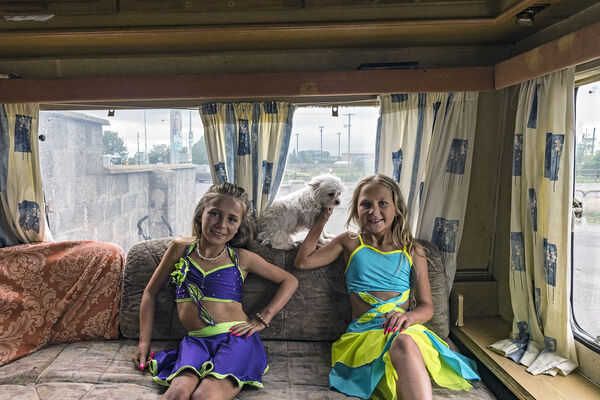
Reilly Sisters with Their Dog, Wexford, Ireland 2019

After Holy Communion Party, Tipperary, Ireland 2019

Four Reilly Girls on their First Holy Communion, Tipperary, Ireland 2019
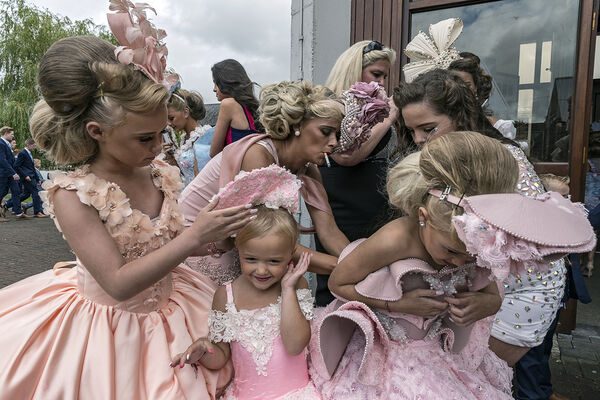
After Church Gathering, The Connors, Wexford, Ireland 2019
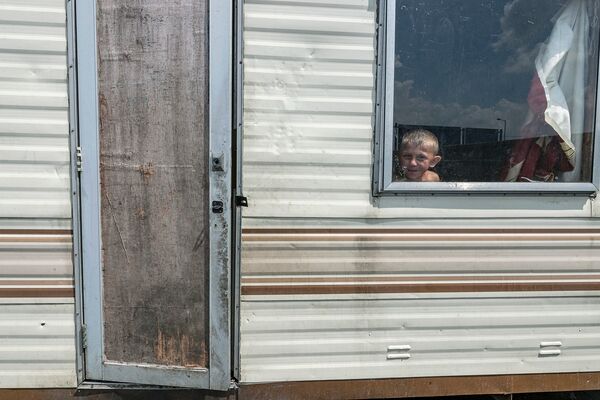
Boy in Window, Tipperary, Ireland 2018

Charlotte in Window, Tipperary, Ireland 2019

Donoghue Kids in Scrapyard, Limerick, Ireland 2019

False Tan and Lashes, Wexford, Ireland 2019

Grieving Granddaughter, Limerick, Ireland 2019
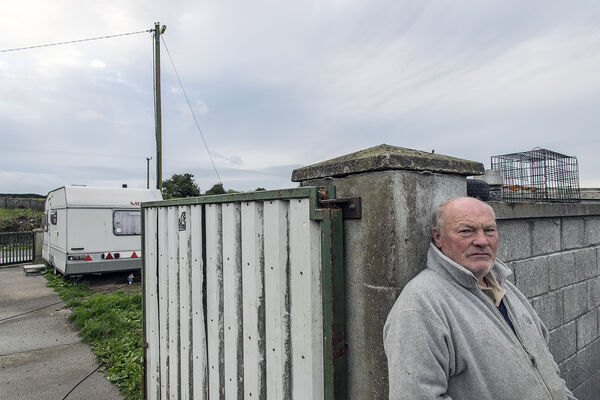
Jim, Tipperary, Ireland 2019
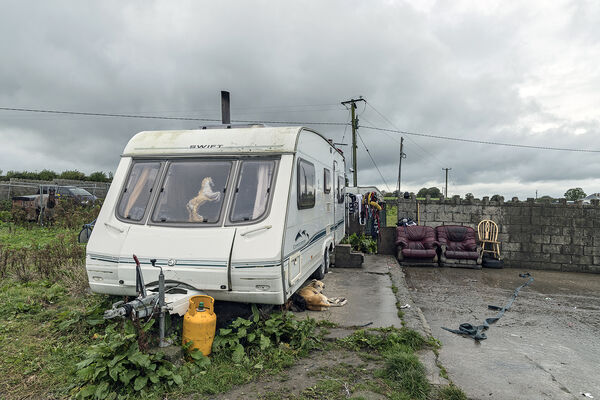
Jim and Ally Reilly's Home, Tipperary, Ireland 2019
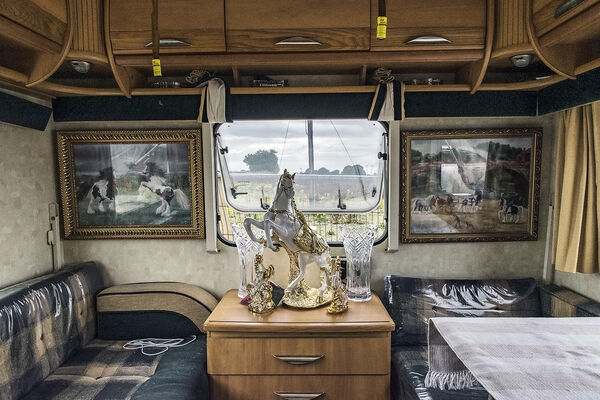
Inside Jimmy and Ally's Caravan, Tipperary, Ireland 2019
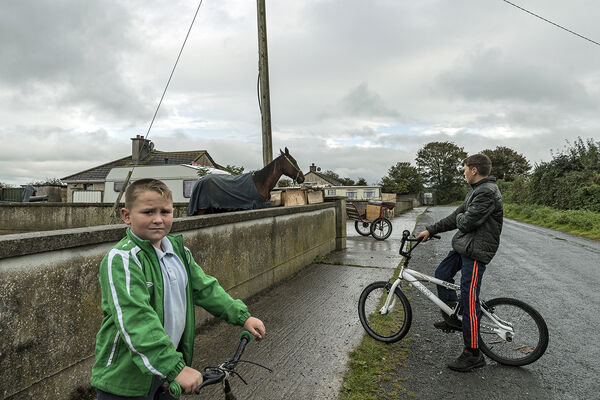
Johnny and Tommy, Tipperary, Ireland 2019

Judy on her First Holy Communion, Tipperary, Ireland 2019
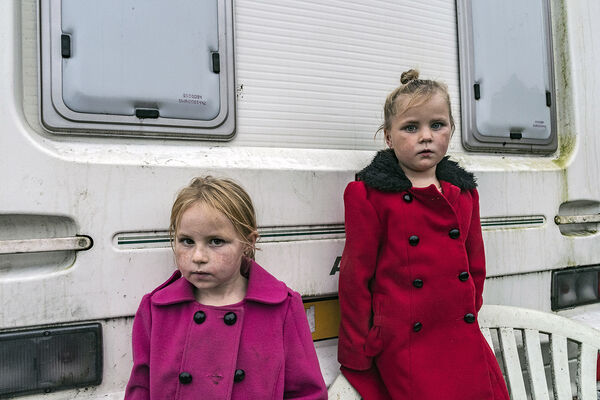
Judy and Leanne, Reilly Sisters, Tipperary, Ireland 2019

Judy and Maggie, Reilly Sisters, Tipperary, Ireland 2019
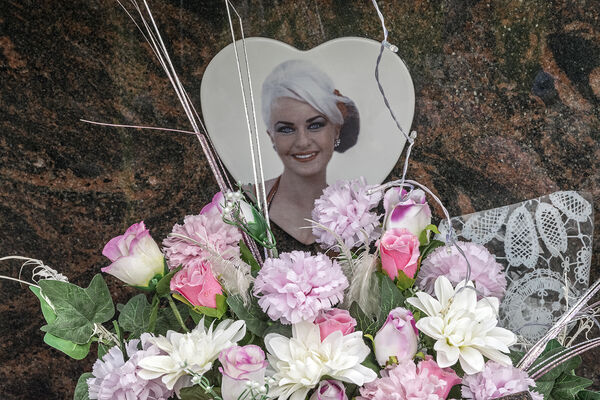
Katie's Grave, Limerick, Ireland 2019
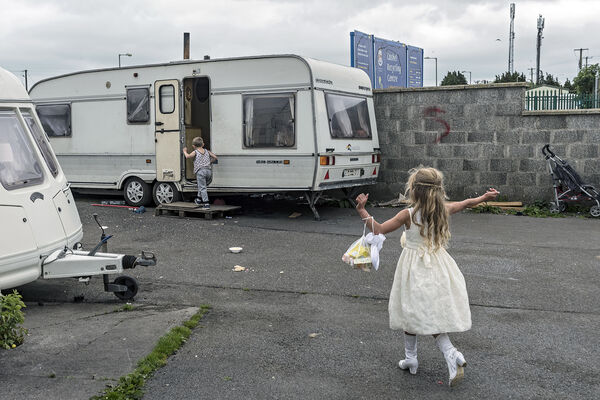
Kelly head home after her first holy communion, Tipperary, Ireland 2019

Kelly at door on her first holy communion, Tipperary, Ireland 2019
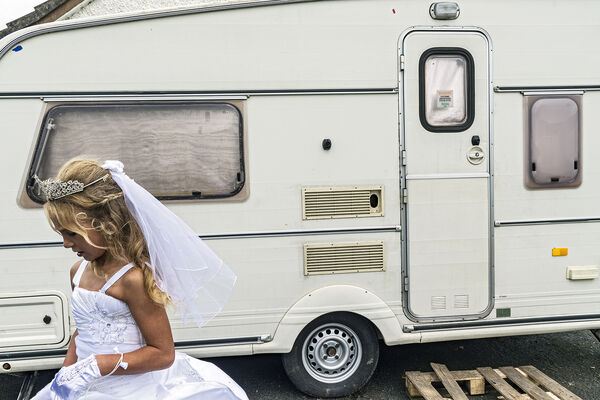
Kelly leaving for Her First Holy Communion, Tipperary, Ireland 2019
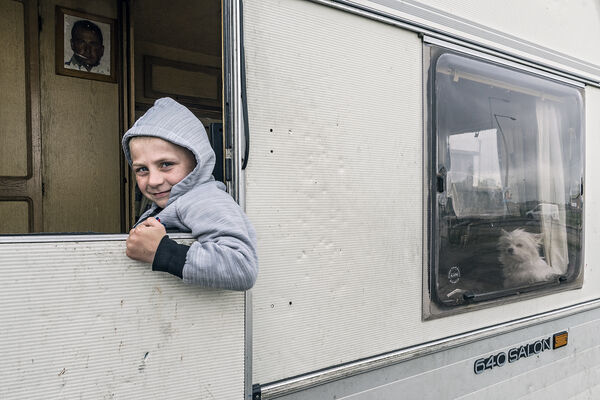
Kevin and Dog, Tipperary, Ireland 2019
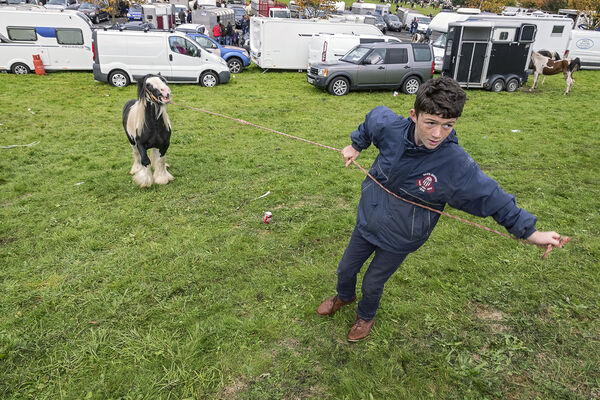
Larry Connors pulling his pony at Ballinasloe Horse fair, Galway, Ireland 2018
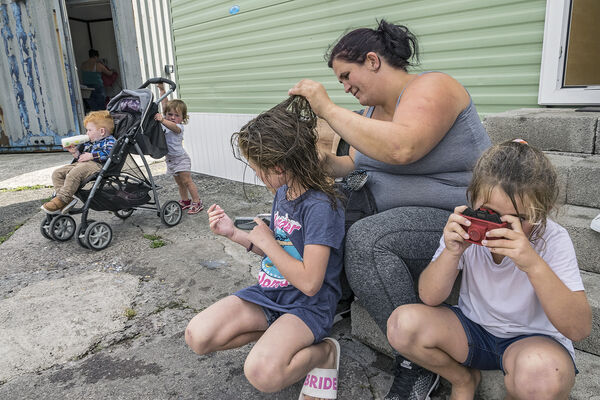
McCarthy Family, Cork, Ireland 2018
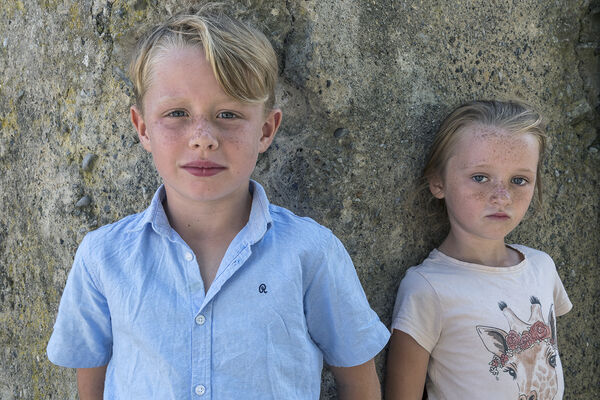
McDonagh Siblings, Athy, Kildare 2019
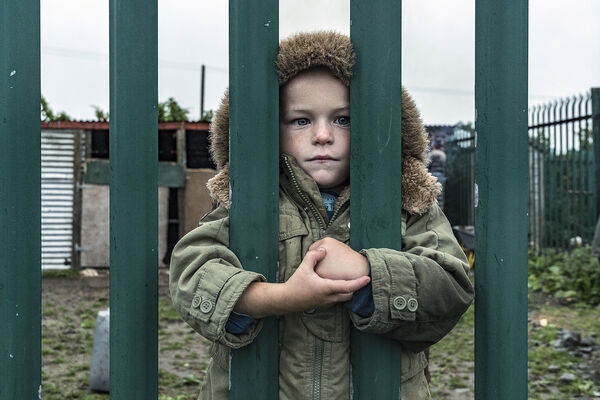
Michael behind Fence, Tipperary, Ireland 2019
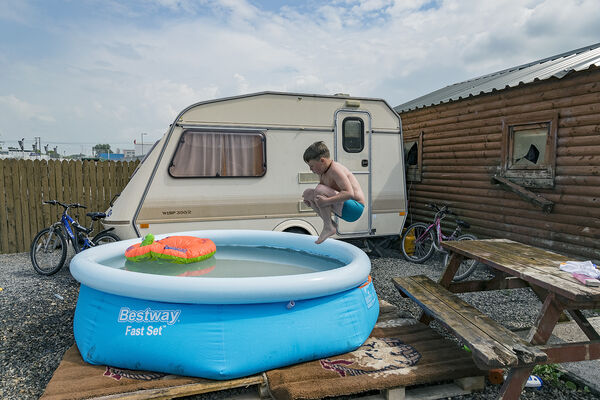
Mikey jumps into the pool during a rare heatwave, Limerick, Ireland 2018

Ned, Judy and Mary, Tipperary, Ireland 2019
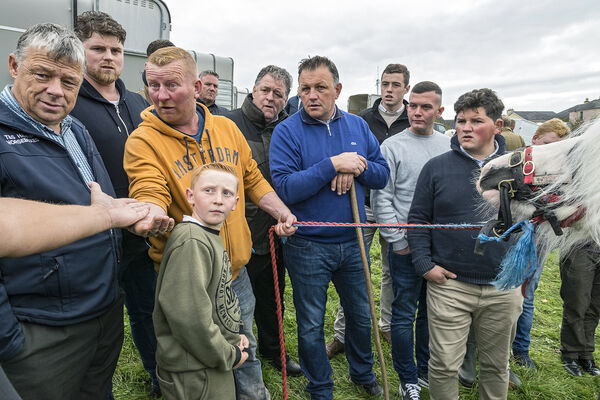
Negotiation, Ballinasloe Horse Fair, Galway, Ireland 2019
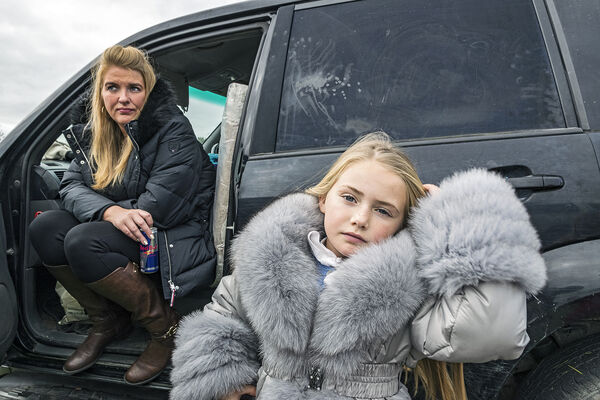
Nellie, Ballinasloe Horse Fair, Galway, Ireland 2018

Nikita on her First Holy Communion, Tipperary, Ireland 2019
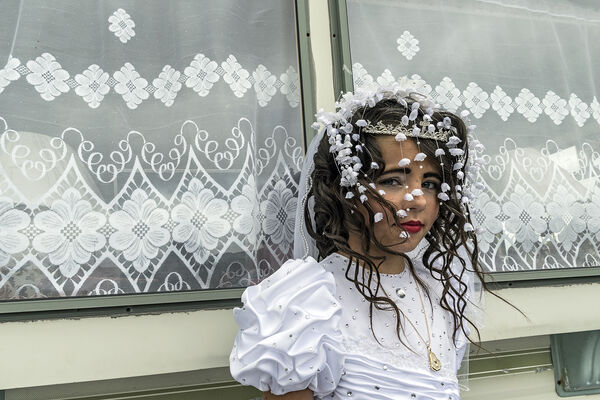
Nikita outside family's caravan on her first holy communion, Tipperary, Ireland 2019
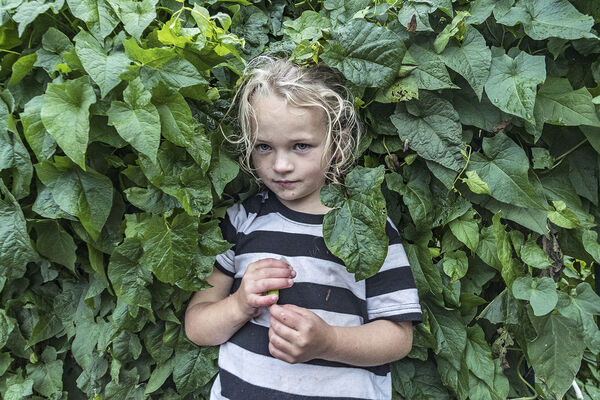
Nikita Holding Bindweed Flower, Tipperary, Ireland 2019

Nikita and Jimmy, Tipperary, Ireland 2019
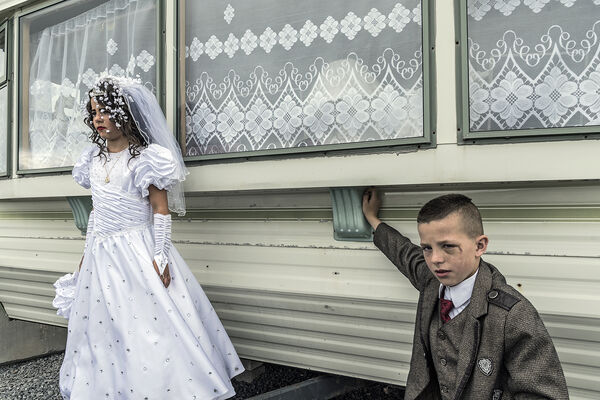
Nikita on Her First Holy Communion and Jimmy, Tipperary, Ireland 2019
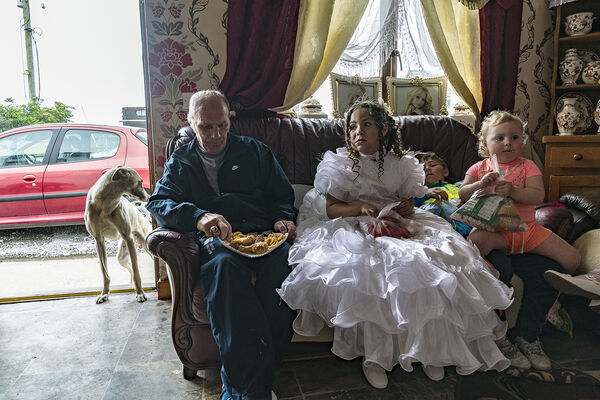
Nita's Holy Communion Party, Tipperary, Ireland 2019

After Nita's Holy Communion Party, Tipperary, Ireland 2019
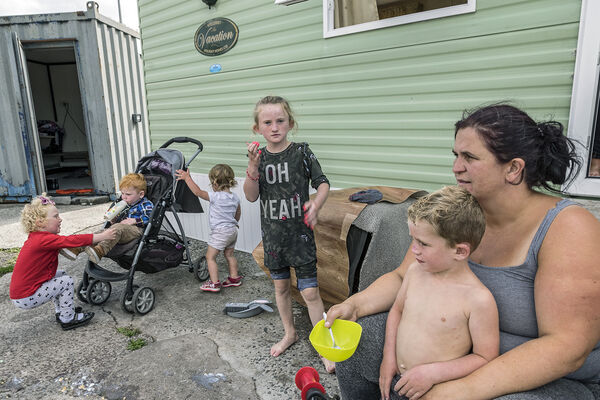
Oh Yeah, McCarthy Family, Cork, Ireland 2018

Patrick at The Wheel, Cork, Ireland 2018
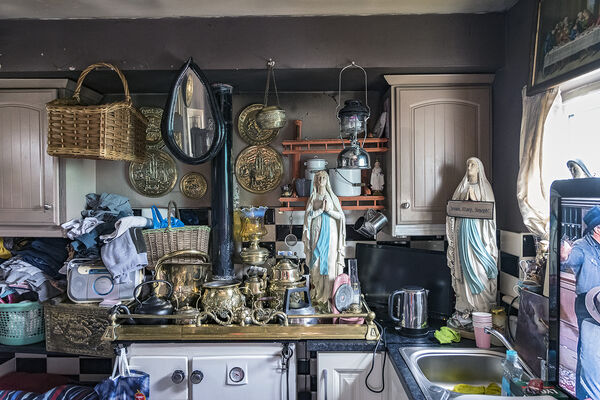
Philomena's Kitchen, Limerick, Ireland 2018

Pink Tutu at Connors Weddings, Wexford, Ireland 2019
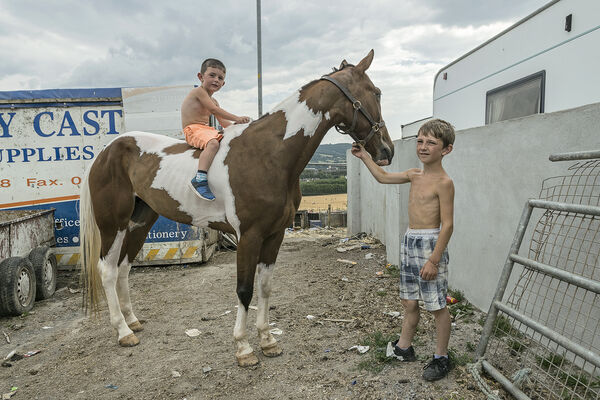
Reilly Brothers, Tipperary, Ireland 2018
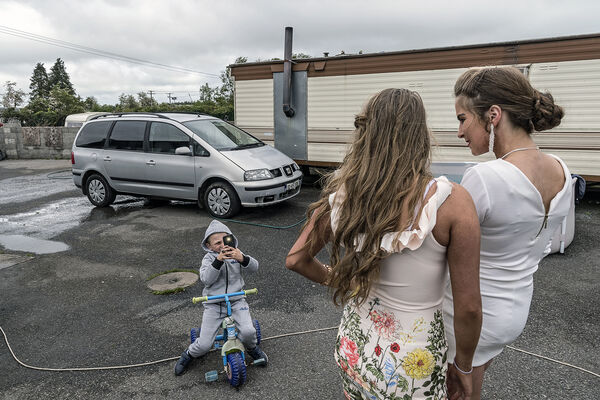
Kevin Takes Pictures of His Sisters, Tipperary, Ireland 2019
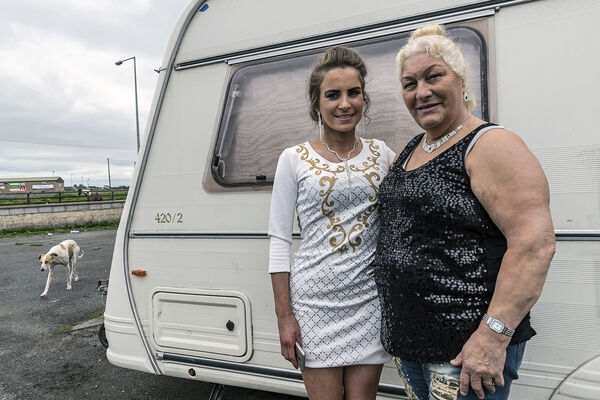
Grandmother and Granddaughter, Tipperary, Ireland 2019

Reilly Siblings in Car, Tipperary, Ireland 2019
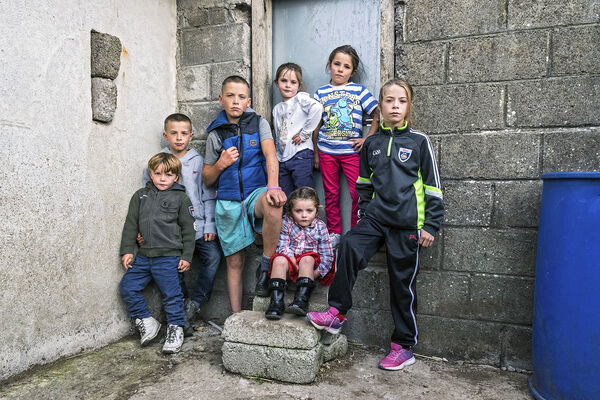
Reilly Siblings, Tipperary, Ireland 2019
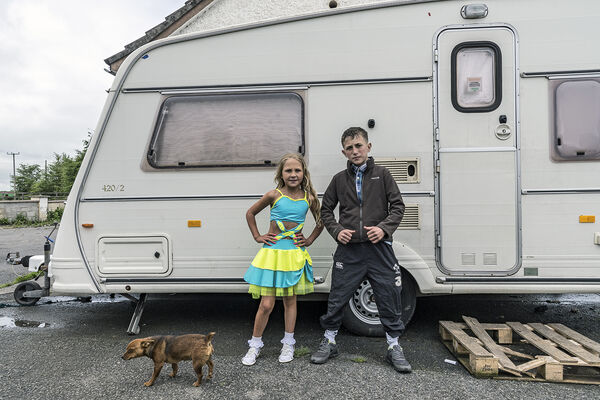
Reilly Siblings, Tipperary, Ireland 2019
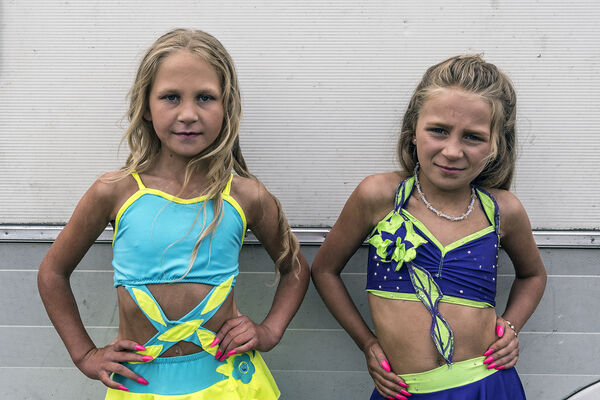
Reilly Sisters, Tipperary, Ireland 2018

Rite of Committal, John 'The Boss' Faulkner's Funeral, Limerick, Ireland 2019

Rocky's First Holy Communion with Cousin Charlotte and James, Tipperary, Ireland 2019
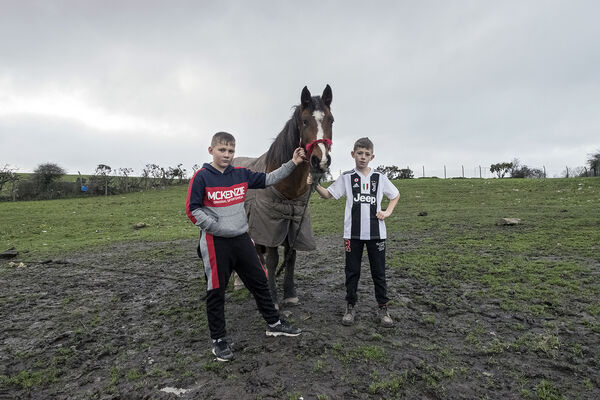
Shane and Luke, Tipperary, Ireland 2019
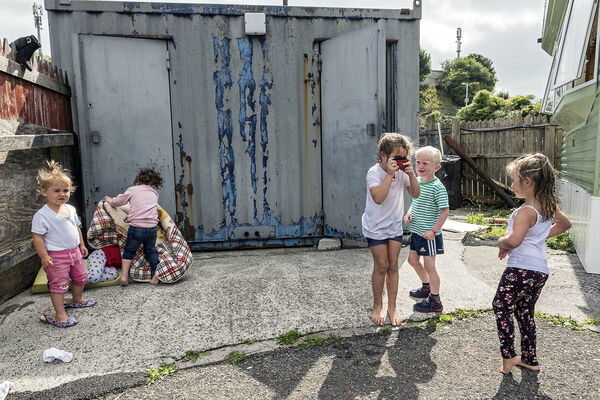
The Fashion Shoot, Cork, Ireland 2018
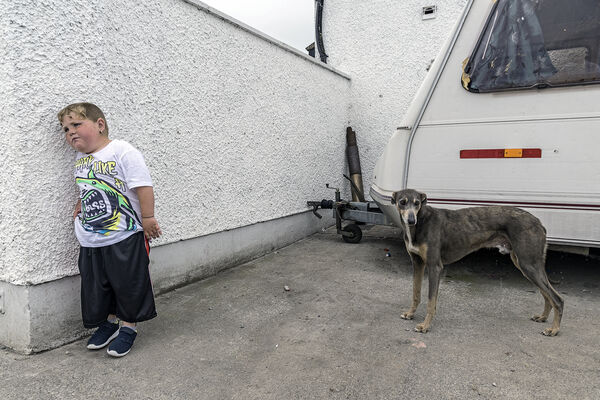
Thinking, Tipperary, Ireland 2019

Ward Siblings, Offaly, Ireland 2018
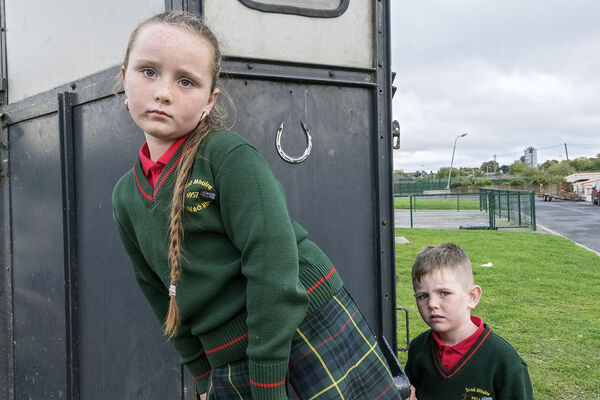
Ward Siblings and Horseshoe, Offaly, Ireland 2018
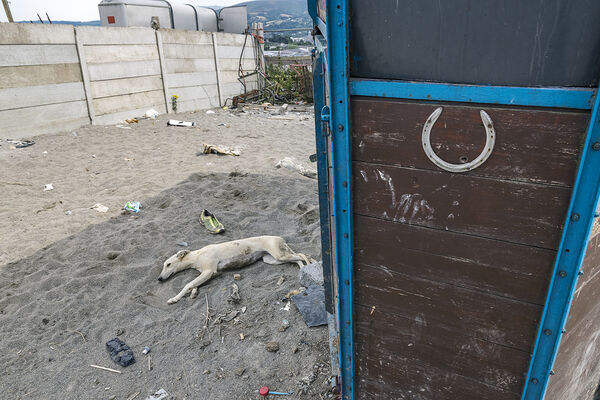
Sleeping Dog, Tipperary, Ireland 2018
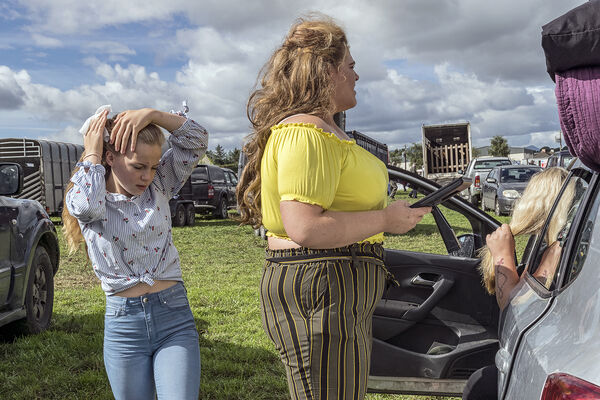
Getting Ready for Puck Fair, Kerry, Ireland 2018
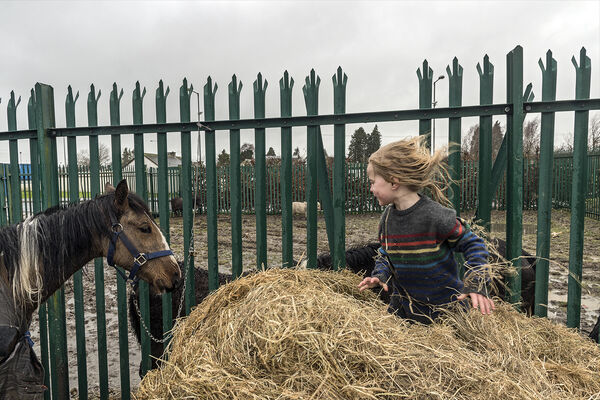
Amy and Horse, Tipperary, Ireland 2020
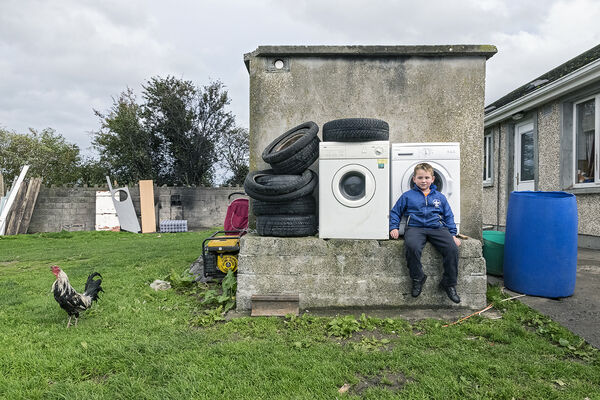
Johnny and Rooster, Tipperary, Ireland 2019
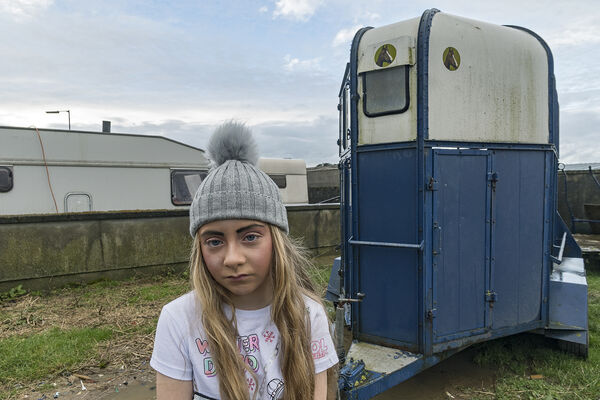
Caitlyn, Tipperary, Ireland 2020
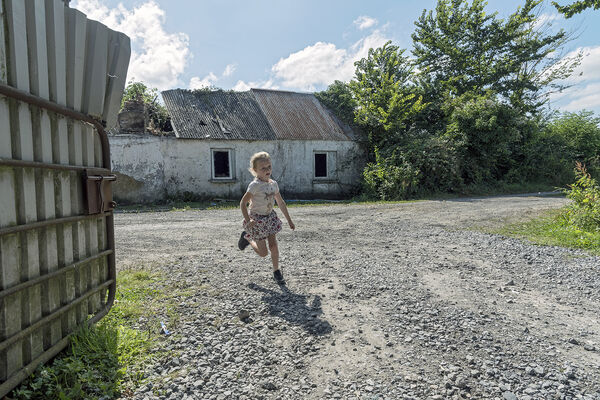
Helen-Marie Running, Kildare, Ireland 2019

Jim and Margaret, Tipperary, Ireland 2019

John Connors, Actor, Singer and Activist, Dublin, Ireland 2019
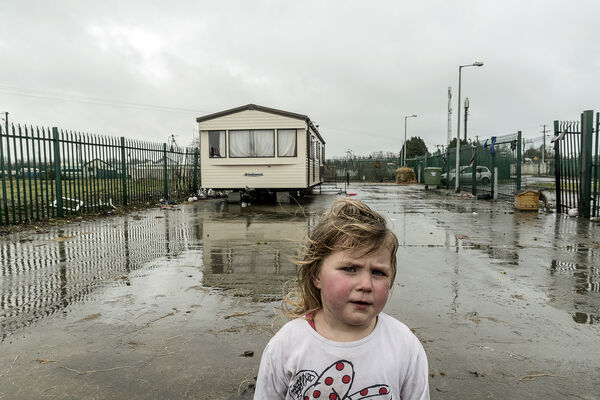
Leanne, Tipperary, Ireland 2020
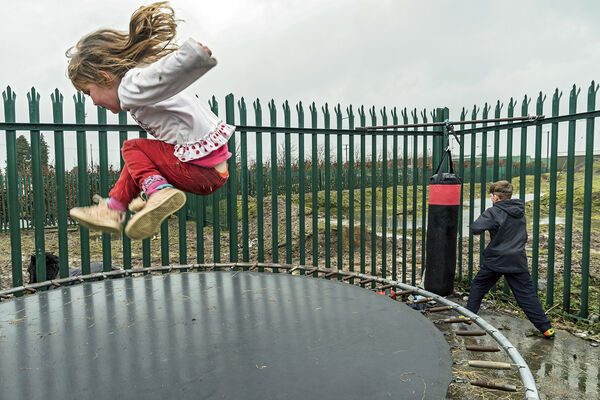
Leanne and Martin, Tipperary, Ireland 2020
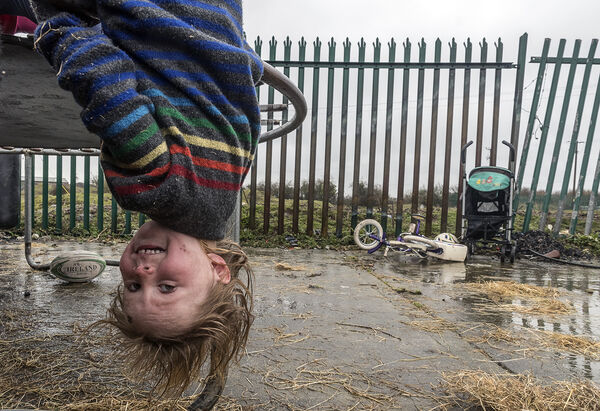
Leanne Upside-Down, Tipperary, Ireland 2020
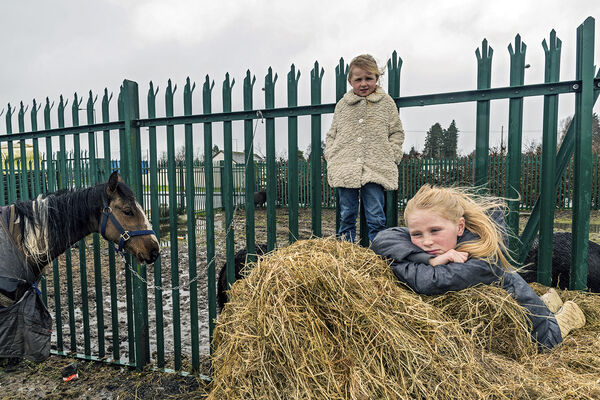
Maggie and Judy on Haystack Tipperary, Ireland 2020

Maggie and Martin, Tipperary, Ireland 2020

McCarthy Family, Cork, Ireland 2018
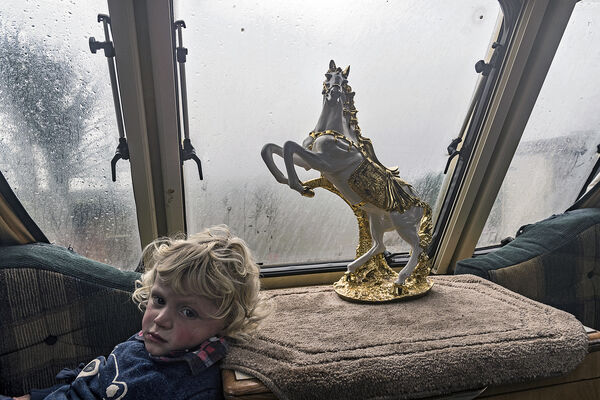
Peter, Tipperary, Ireland 2020
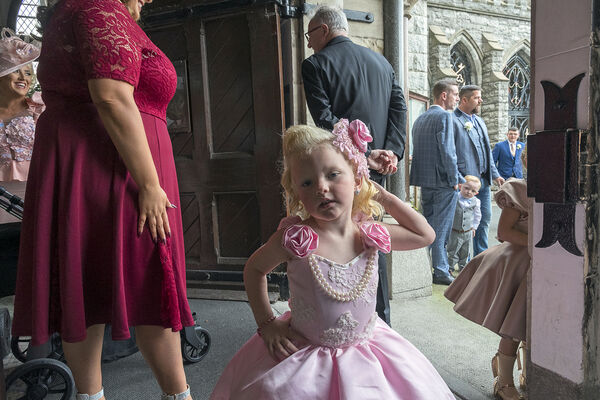
Pink Dress, Dublin, Ireland 2019
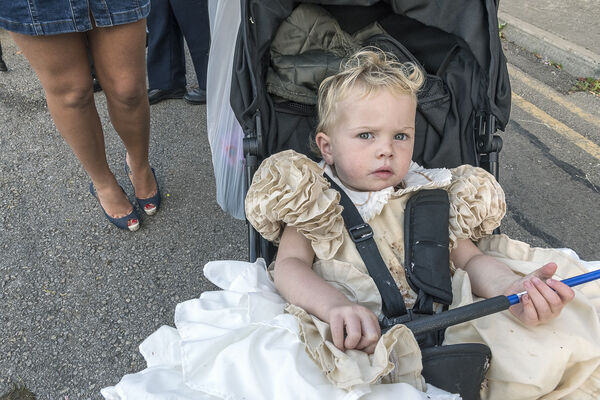
Girl in Pram, Galway, Ireland 2019
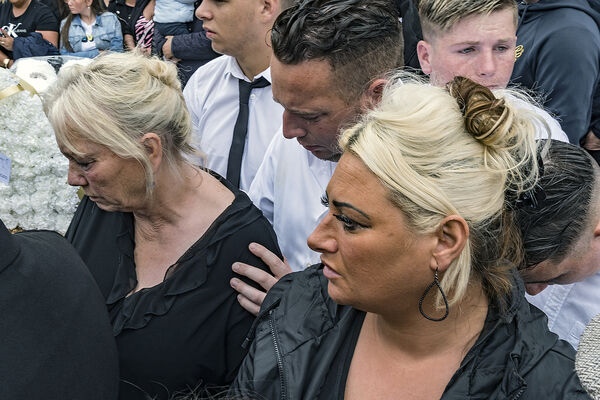
Widow Comforted by Nephew, Limerick, Ireland 2019
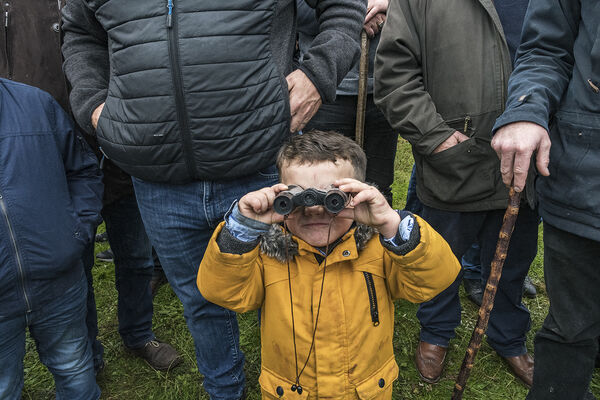
Boy with Binocular, Ballinasloe Horse Fair, Galway, Ireland 2019

Gold Necklace and Boxing Glove, Galway, Ireland 2019
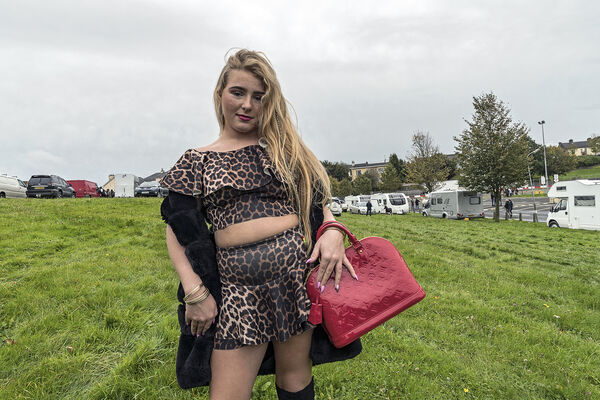
Girl with Leopard Print Outifit, Ballinasloe Horse Fair, Galway, Ireland 2019
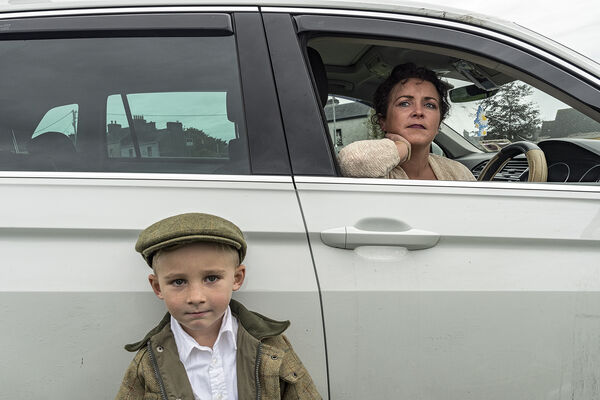
Mother and Son, Ballinasloe Horse Fair, Galway, Ireland 2019

Mullane Girl holding Her Nephew, Ballinasloe Horse Fair, Galway, Ireland 2019
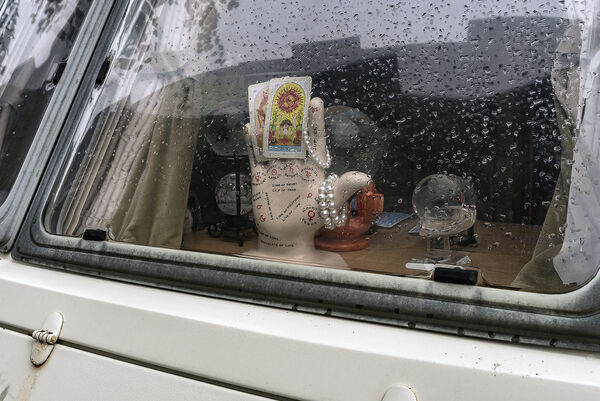
Palm Reader, Ballinasloe Horse Fair, Galway, Ireland 2019

Reilly Sisters, Tipperary, Ireland 2020
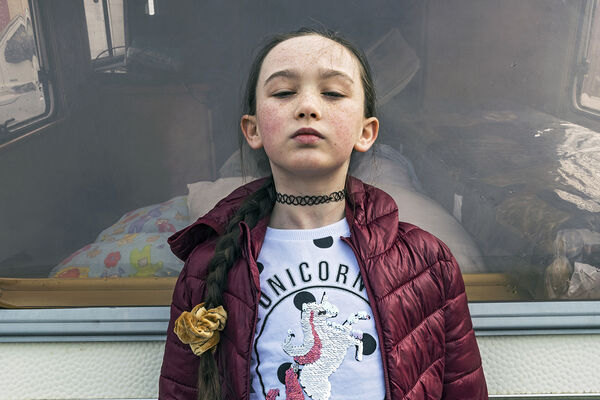
Taylor, Galway, Ireland 2020
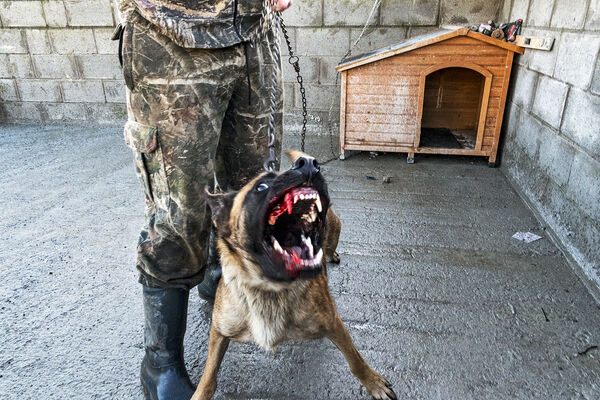
Guard Dog, Limerick, Ireland 2019
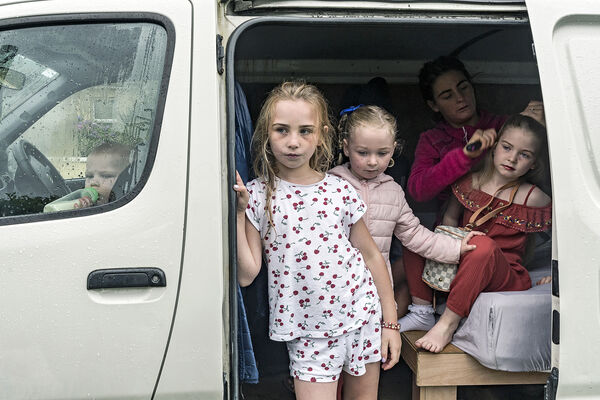
Delaney Girls Getting Ready for Puck Fair, Kerry, Ireland 2019
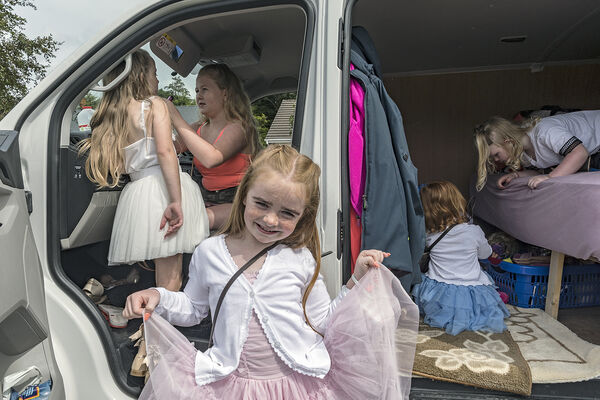
Pink Dress, Puck Fair, Kerry, Ireland 2019
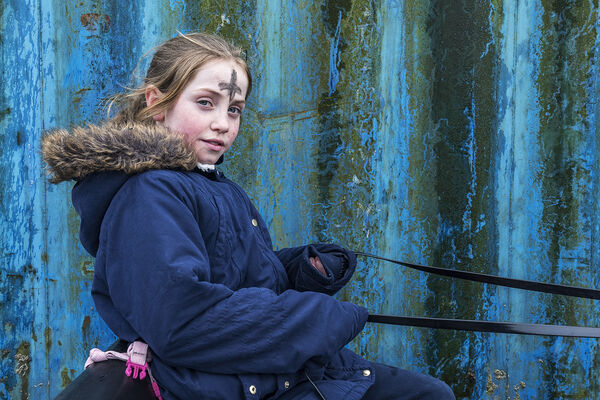
Caroline, Ash Wednesday, Cork, Ireland 2020
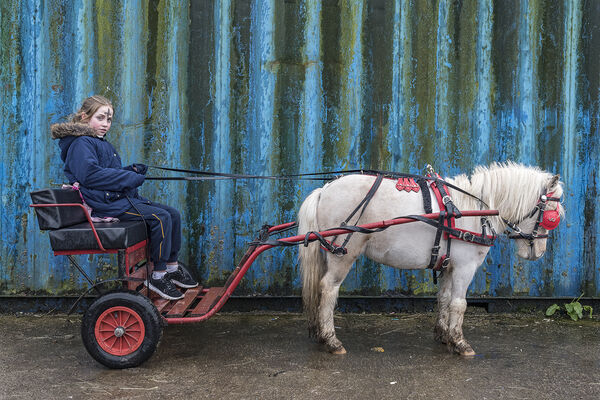
Caroline and her Pony, Ash Wednesday, Cork, Ireland 2020
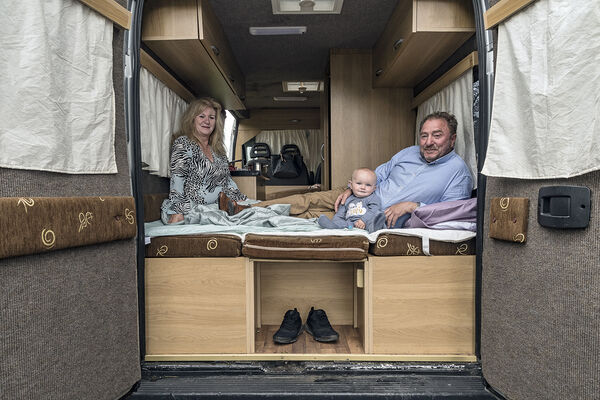
Delaneys, Puck Fair, Kerry, Ireland 2019
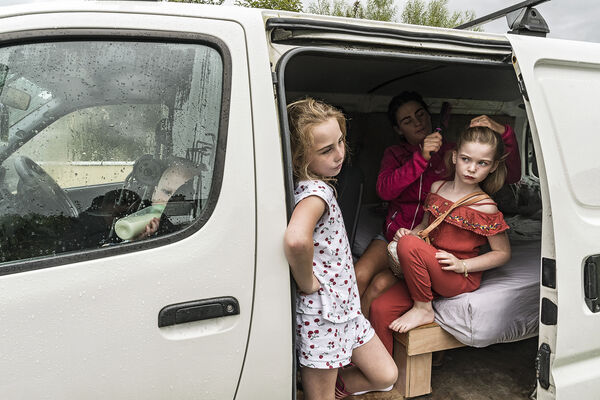
Delaney Girls getting ready for Puck Fair, Kerry, Ireland 2019
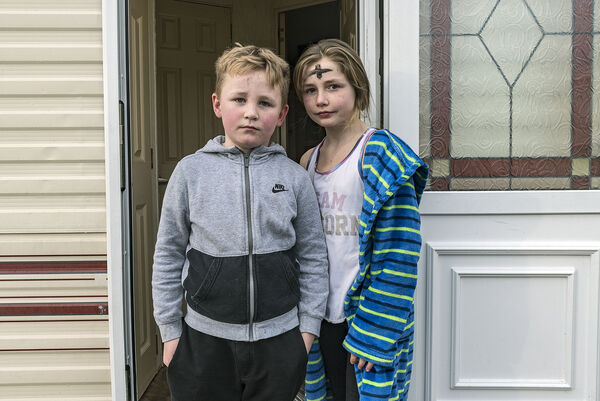
Margaret and brother, McCarthy Siblings, Cork, Ireland 2020

McCarthy Men, Cork, Ireland 2020

Patrick and his children, Ash Wednesday, Cork, Ireland 2020
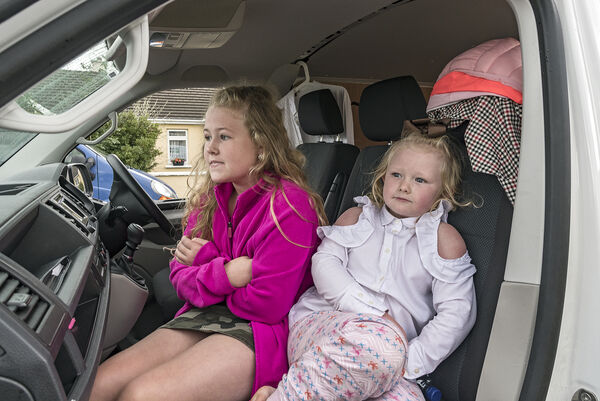
Delaney Sisters, Puck Fair, Kerry, Ireland 2019
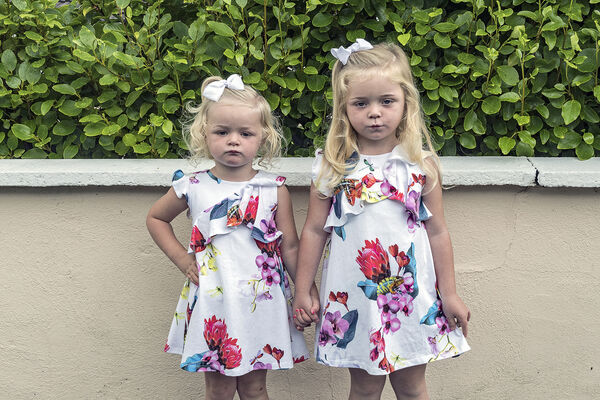
Tropical Flowers Dresses, Puck Fair, Kerry, Ireland 2020

Springlane Halting Site, Cork, Ireland 2020

Mary, 10 years old, Limerick, Ireland 2020
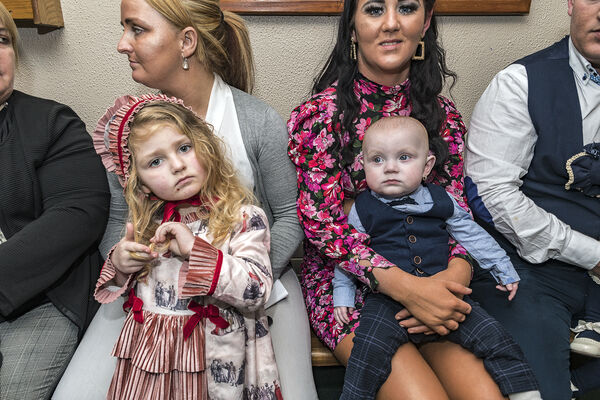
Mothers and Children at the church, Limerick, Ireland 2020
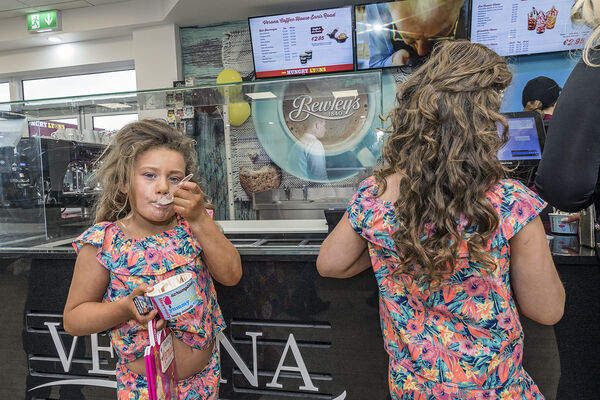
Faulkner Girl having Ice Cream, Limerick, Ireland 2020

Amy and Teresa, Cousins, Tipperary, Ireland 2020

Chantelle and Horse, Tipperary, Ireland 2020
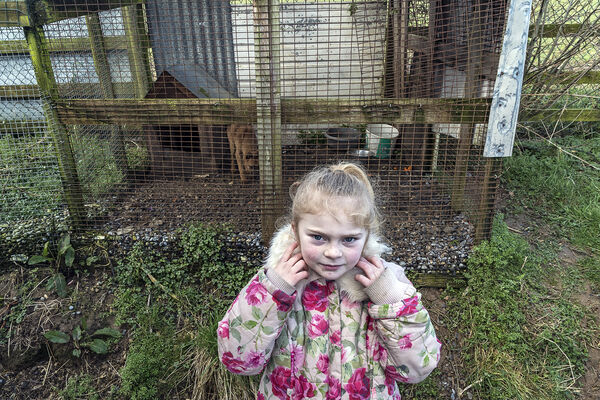
Chantelle, Tipperary, Ireland 2020

Chloe with baby niece, Limerick, Ireland 2020

John with Leanne and Baby Martin, Galway, Ireland 2020
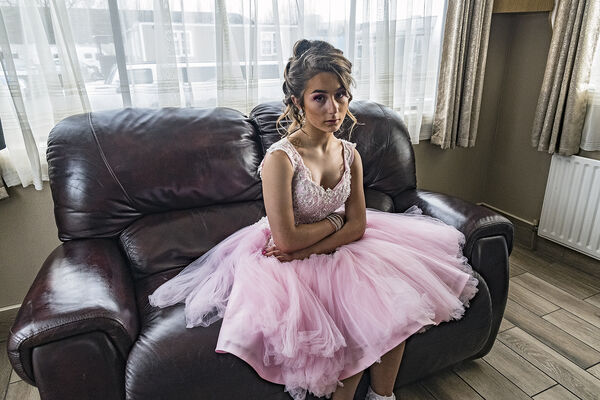
Ellie on Her Confirmation, Limerick, Ireland 2020
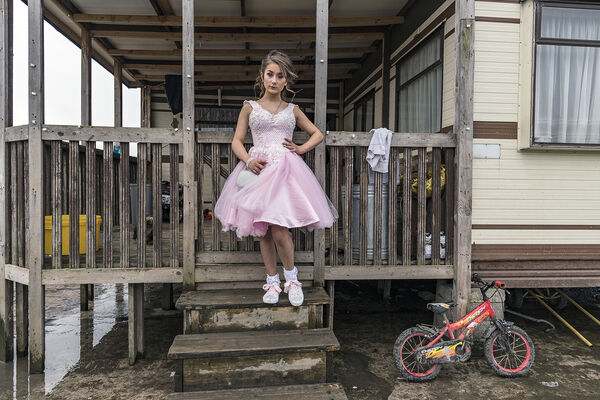
Ellie on Her Confirmation, Limerick, Ireland 2020
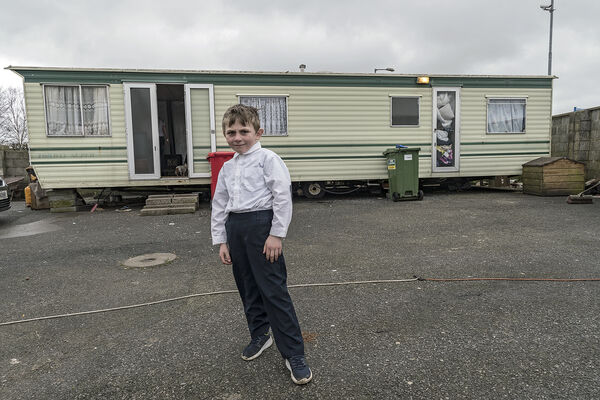
Kevin, Tipperary, Ireland 2020
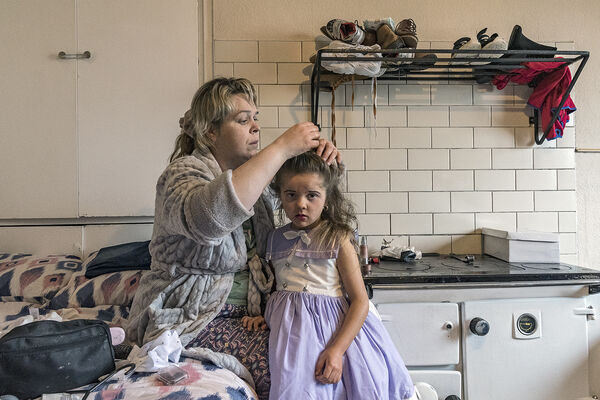
Geraldine fixing Leanne's Hair, Galway, Ireland 2020
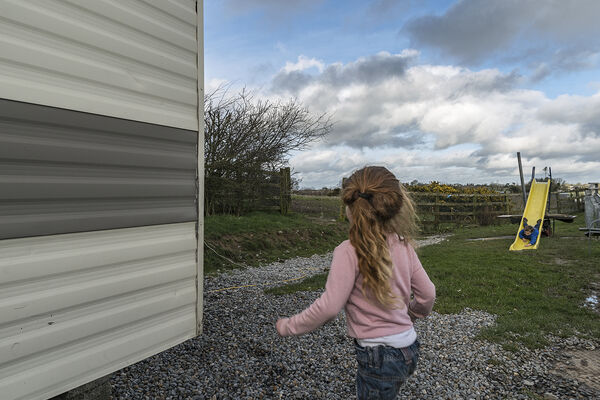
Lisa and Willie, Tipperary, Ireland 2020
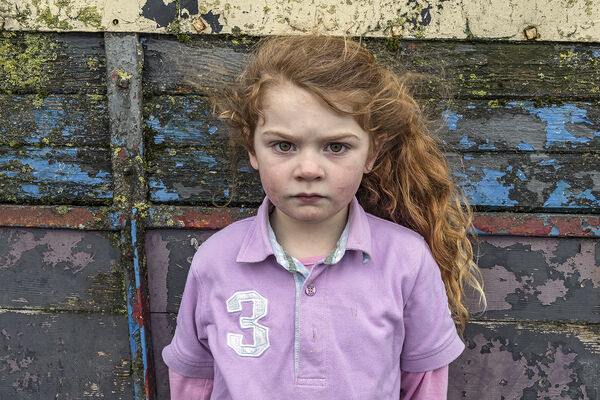
Lisa, Tipperary, Ireland 2020
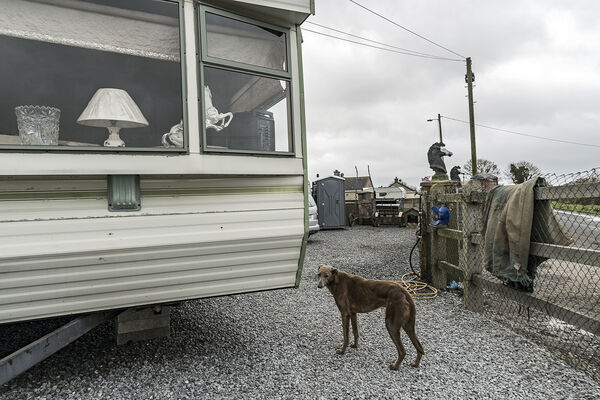
Lurcher at Reilly's Campsite, Tipperary, Ireland 2020
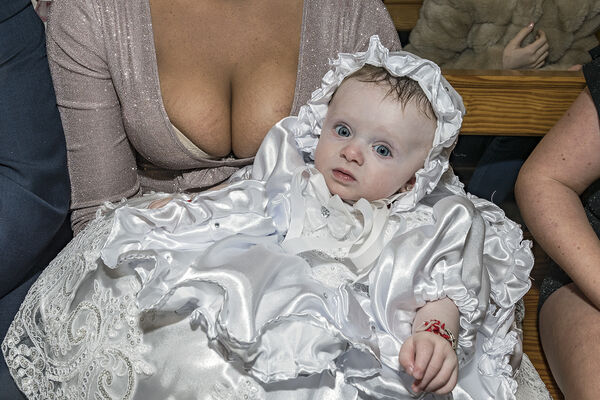
Narissa at Her Christening, Galway, Ireland 2020

Ned, Galway, Ireland 2020
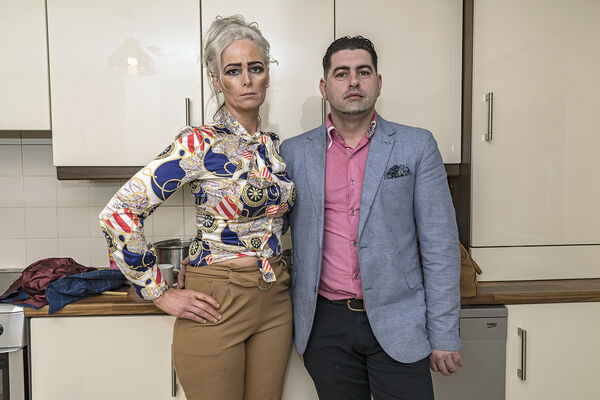
Nora and Paddy, Limerick, Ireland 2020

Reilly Siblings, Tipperary, Ireland 2020
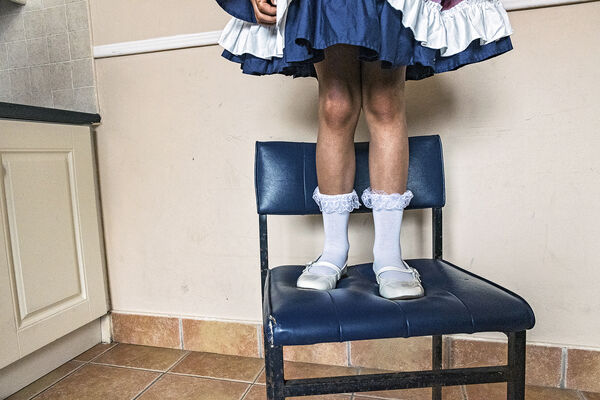
Taylor's Legs, Galway, Ireland 2020
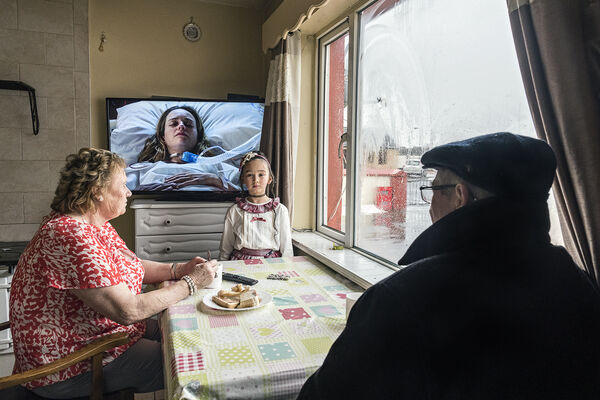
Taylor, Galway, Ireland 2020

Ned, Taylor and Bridget, Galway, Ireland 2020

Nikita, Tipperary, Ireland 2020
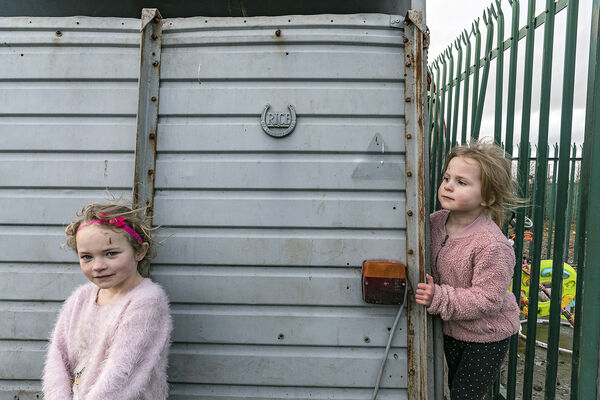
Teresa and Amy, Cousins, Tipperary, Ireland 2020
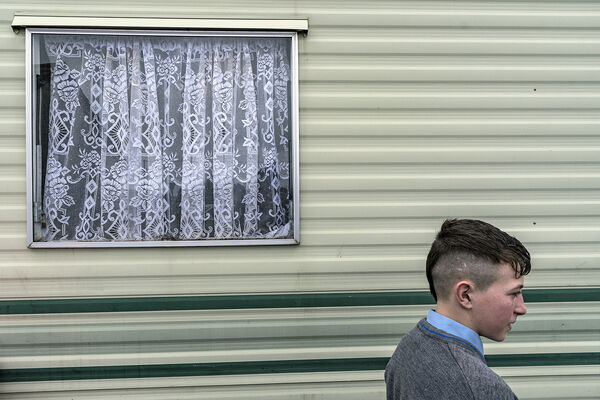
Willie, Tipperary, Ireland 2020
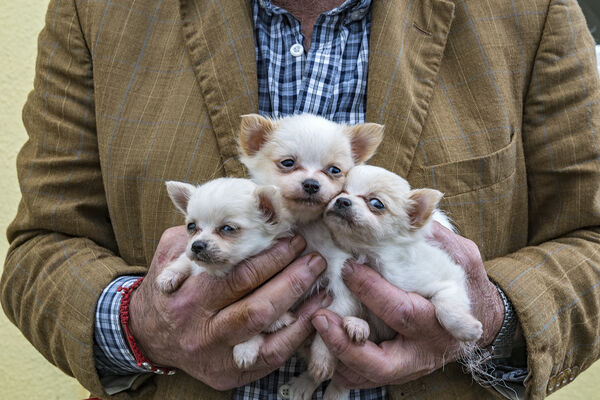
Three Puppies, Limerick, Ireland 2019
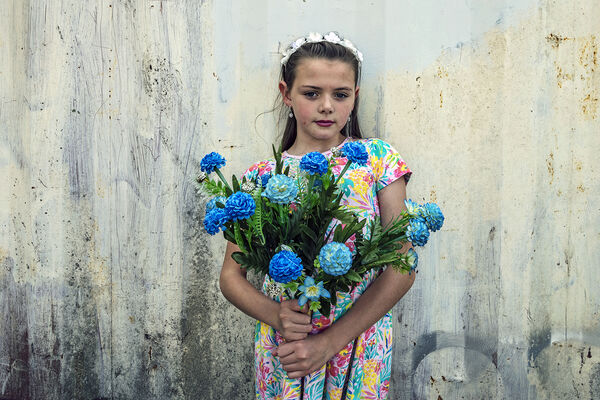
Alesha, Blue Flowers, Dublin, Ireland 2020

Pa and Maggie, Father and Daughter, Tipperary, Ireland 2020
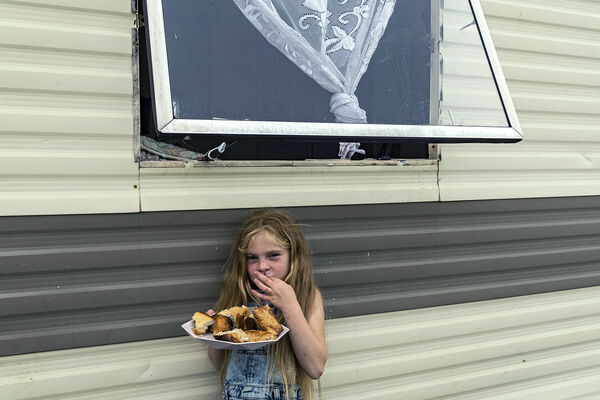
Chantelle, Garlic Bread, Tipperary, Ireland 2020
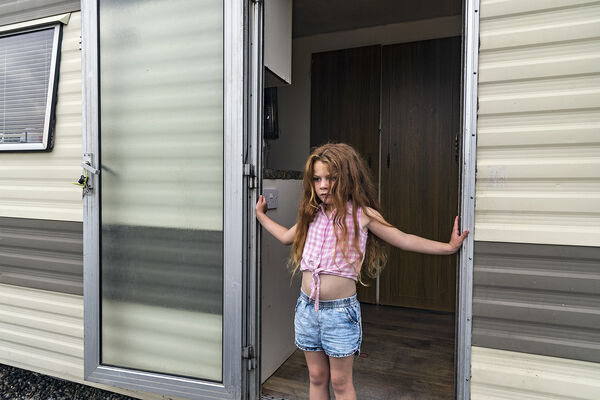
Maggie at The Door, Tipperary, Ireland 2020

Chantelle on The Swing, Tipperary, Ireland 2020
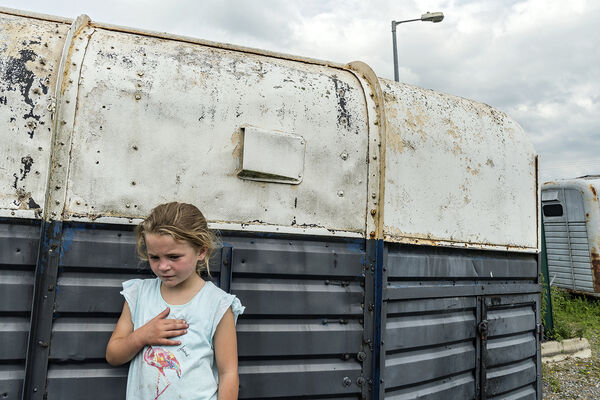
Cheyenne, Tipperary, Ireland 2020
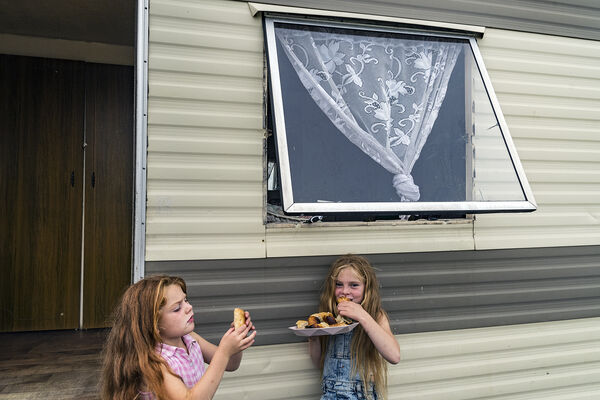
Maggie and Chantelle, Garlic Bread, Tipperary, Ireland 2020
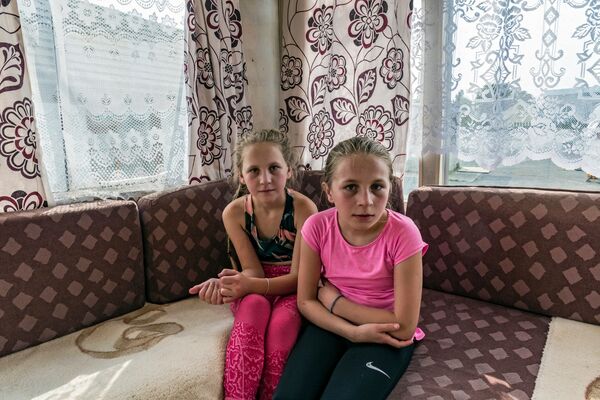
Chloe and Britney, Tipperary, Ireland 2020
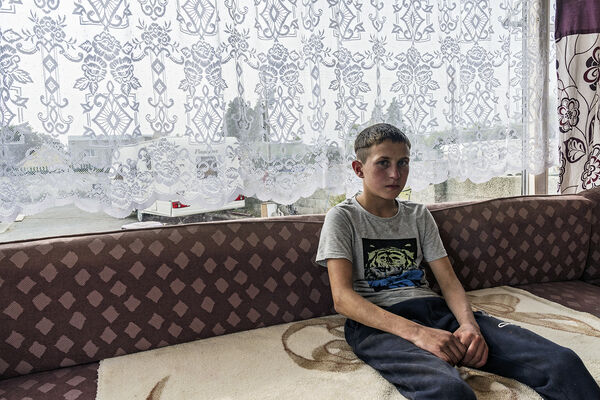
Willie, Tipperary, Ireland 2020

Nell, Galway, Ireland 2020

Paris, Galway, Ireland 2020

Lucia with Her Father's Hand, Galway, Ireland 2020
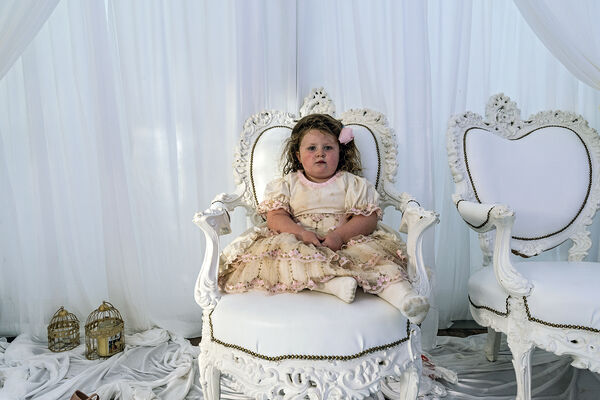
Avemaria, Galway, Ireland 2020
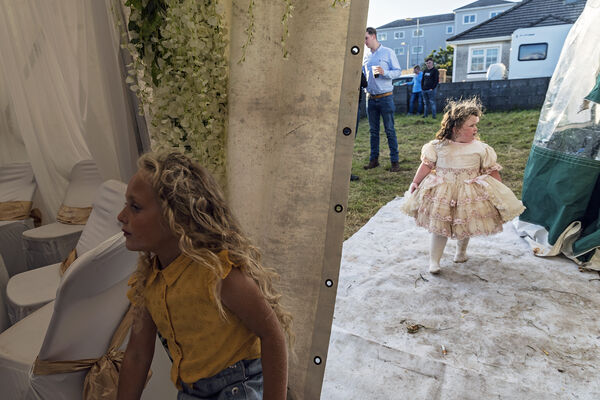
Two Girls at Marquee Party, Galway, Ireland 2020
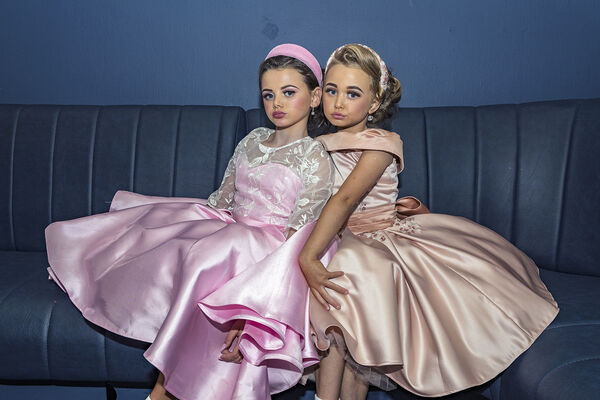
Alesha and Savannah, Dublin, Ireland 2020

Alesha, Dublin, Ireland 2020

Margaret and Alesha, Dublin, Ireland 2020
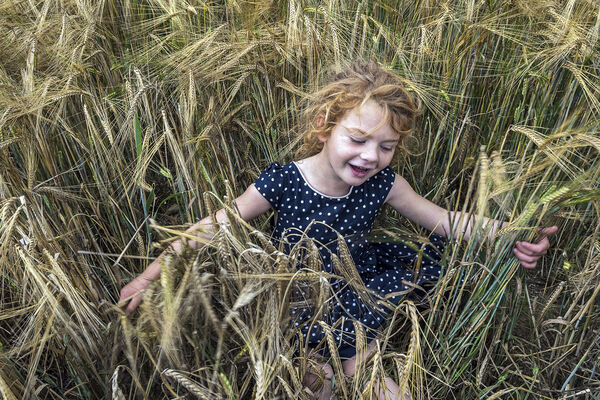
Maggie in Wheat Field, Tipperary, Ireland 2020

Mercedes and Margarita after Marquee Party, Galway, Ireland 2020
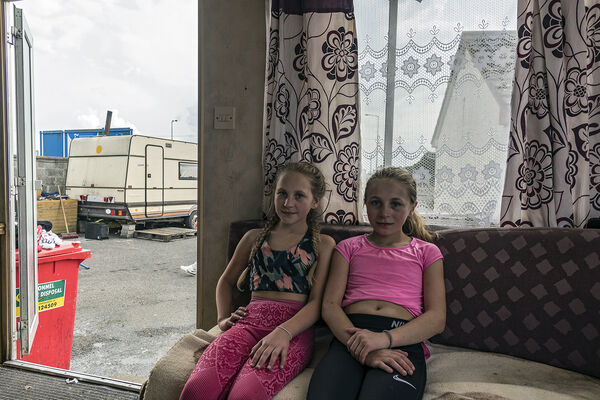
Britney and Chloe, Tipperary, Ireland 2020

Burp, Galway, Ireland 2020

Chantelle, Maggie and Tina, Tipperary, Ireland 2020
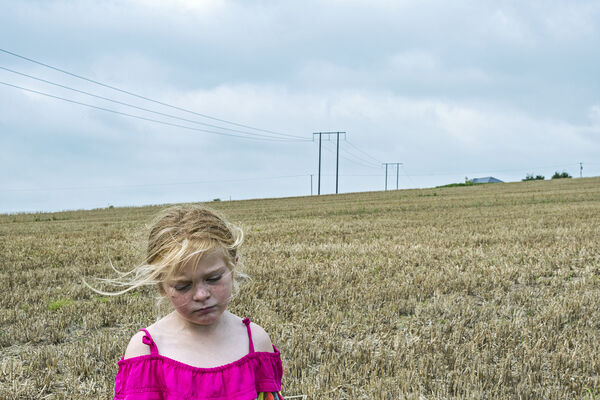
Chantelle in The Wheat Field, Tipperary, Ireland 2020
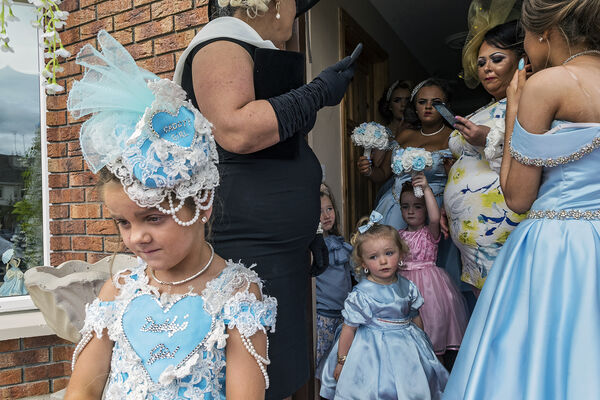
Daddy's Girl, Galway, Ireland 2020
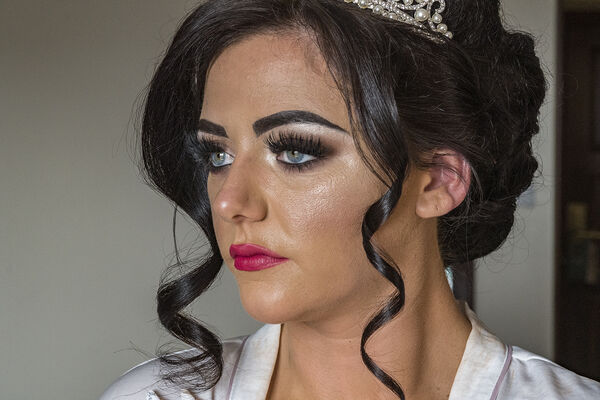
Delillah Just Before Her Wedding, Dublin, Ireland 2020

Delillah Getting Her Hair Done Before Her Wedding, Dublin, Ireland 2020
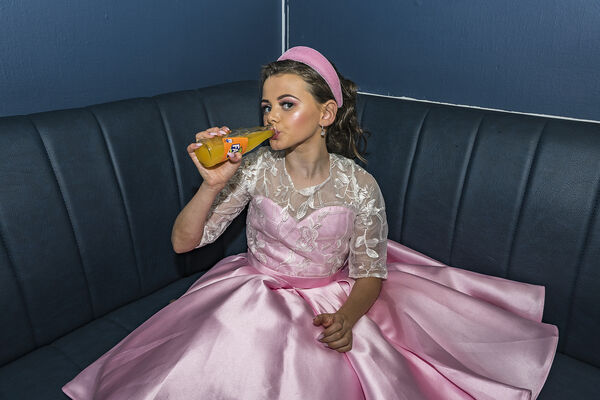
Alesha Drinking Fanta, Dublin, Ireland 2020
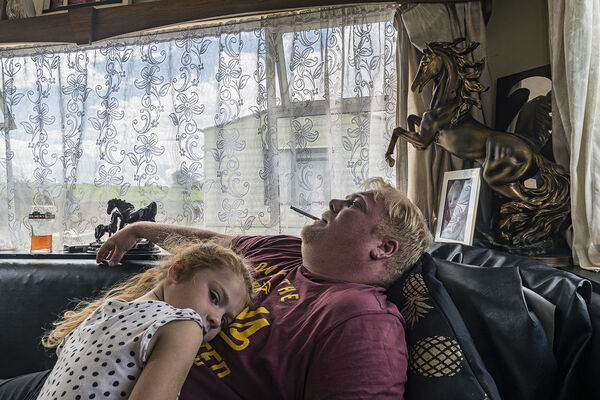
Pa and Maggie, Tipperary, Ireland 2020
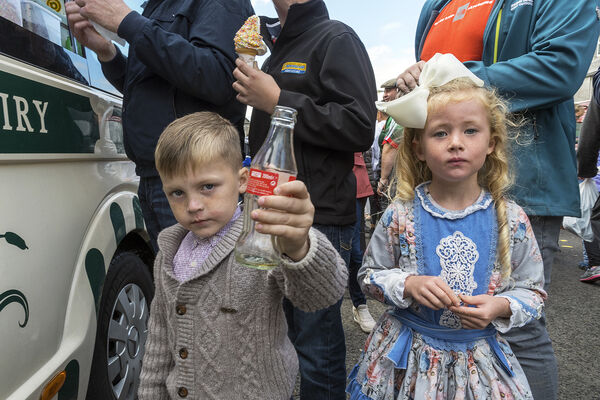
Have A Coke, Galway, Ireland 2019
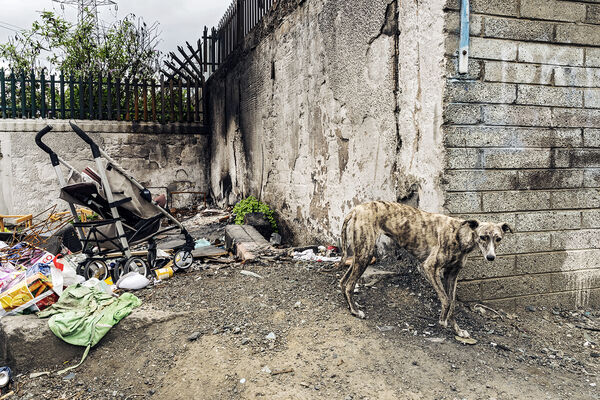
Lurcher, Dublin, Ireland 2019

Cheyenne and Pa, Tipperary, Ireland 2019
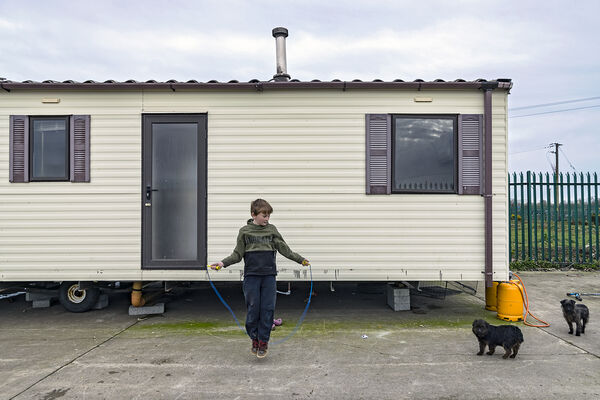
Martin Jumprope with Dogs, Tipperary, Ireland 2019
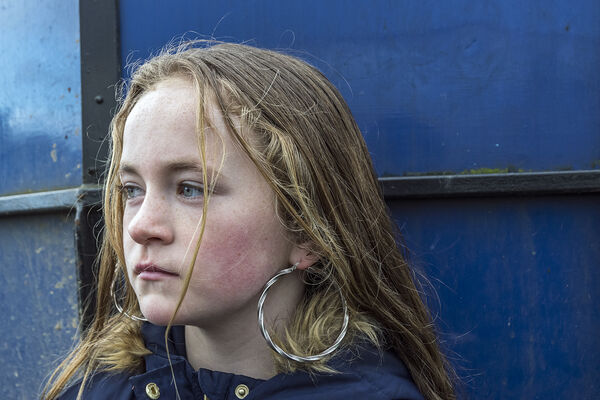
Portrait of Katelyn, Tipperary, Ireland 2019

Martin with Jump Rope, Tipperary, Ireland 2019

Rocky's First Holy Communion, Tipperary, Ireland 2019
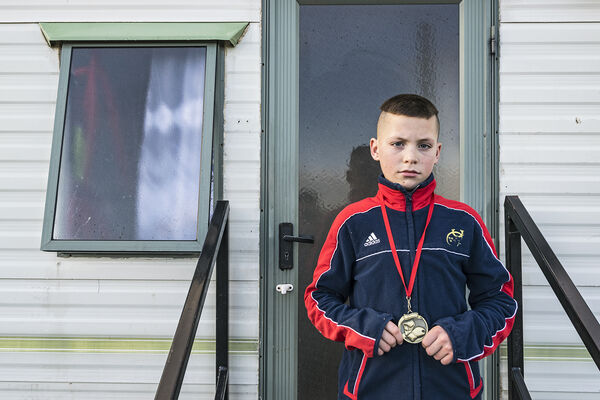
Rocky with his Boxing Medal, Tipperary, Ireland 2019

Priscilla, Tipperary, Ireland 2019
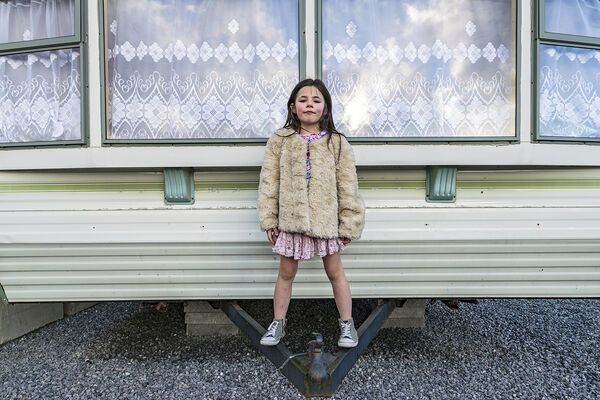
Nikita, Tipperary, Ireland 2019
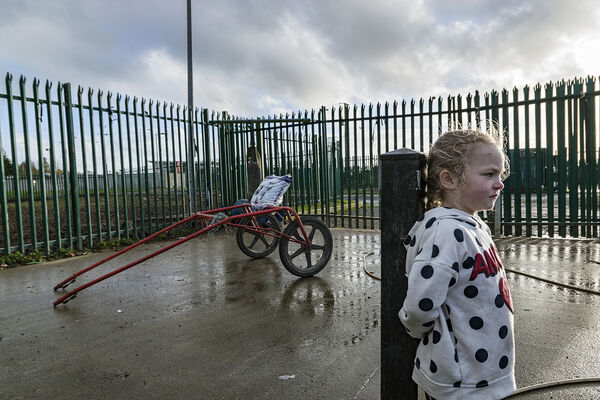
Nikita, Tipperary, Ireland 2019
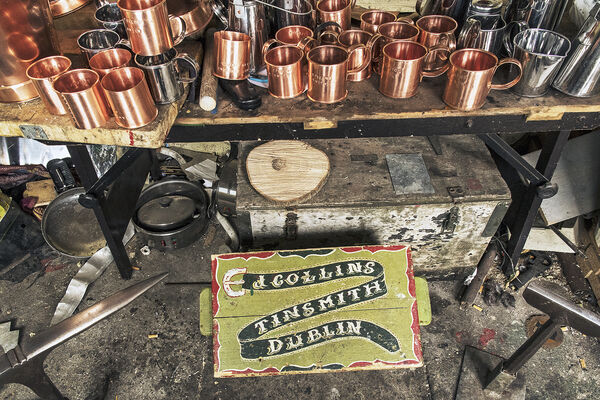
James Collins, Tinsmith, Dublin, Ireland 2019
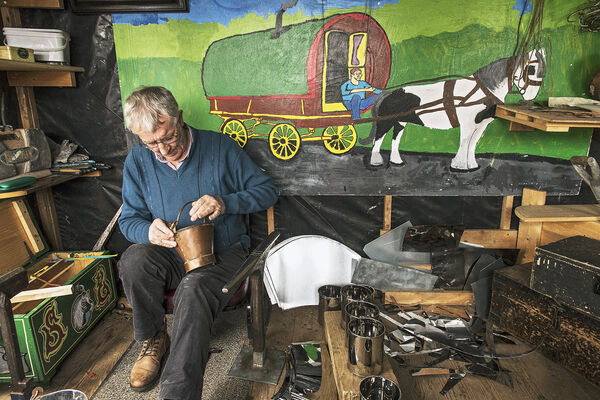
Tom McDonnell, Tinsmith, Dublin, Ireland 2019
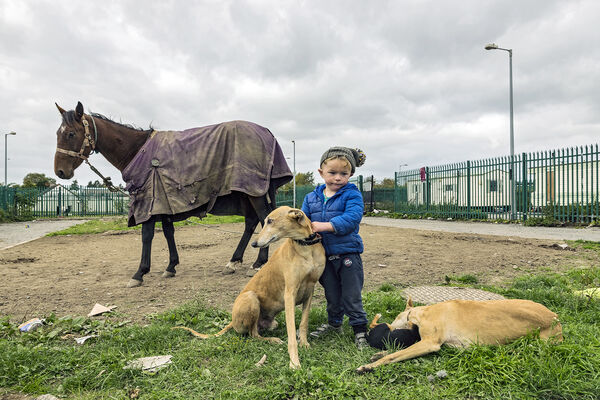
Michael with Dogs and Horse, Tipperary, Ireland 2018
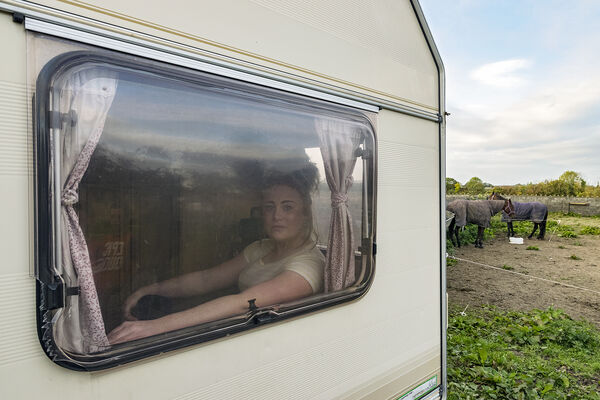
Pricilla In The Window, Tipperary, Ireland 2018
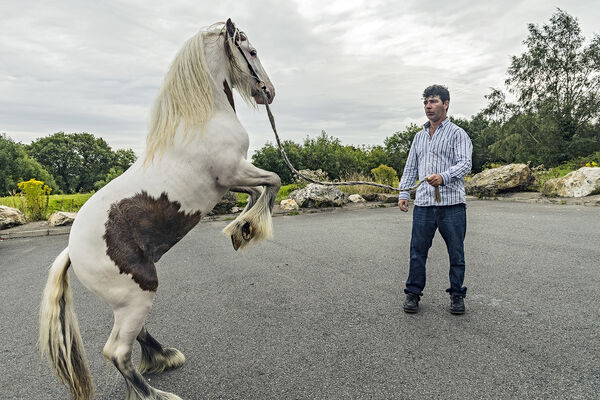
Rearing Pony, Wexford, Ireland 2019
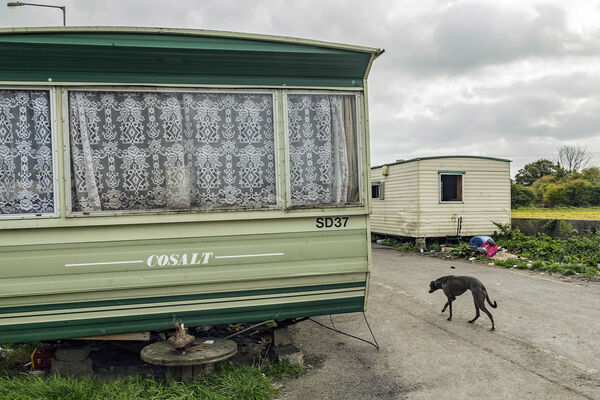
Caravans and Lurcher, Tipperary, Ireland 2018

Willy With Dog, Tipperary, Ireland 2019

Judy on Her First Holy Communion with Her Father, Tipperary, Ireland 2019
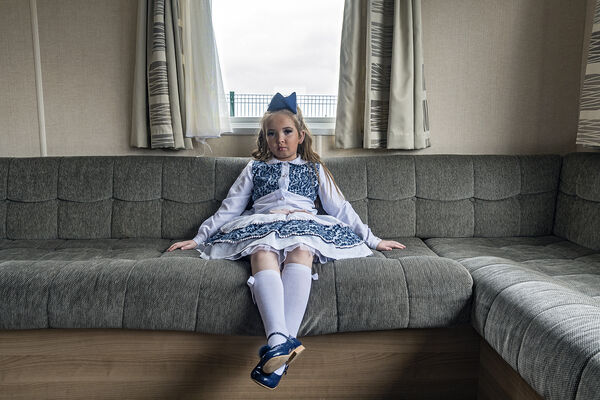
Channell, Galway, Ireland 2021
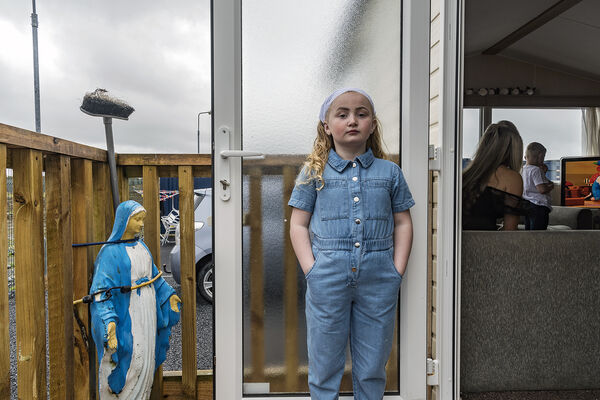
Eileena, Galway, Ireland 2021
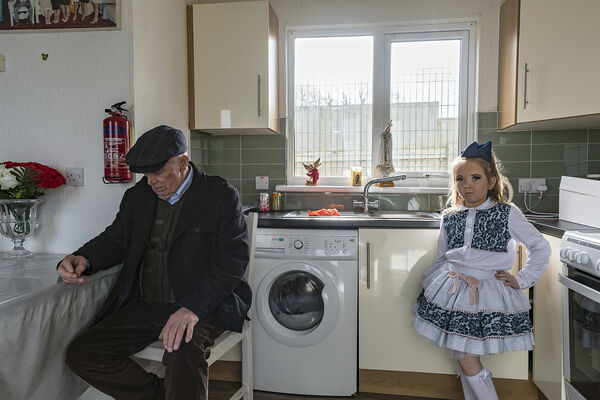
Jack and Granddaughter Channell, Galway, Ireland 2021

Kathleen and Bernadette, Deaf Sisters, Galway, Ireland 2021
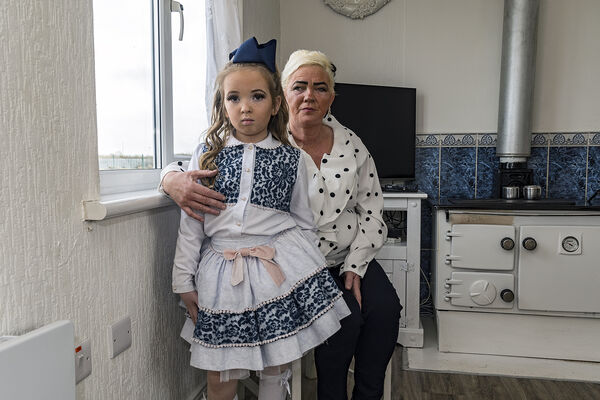
Channell and Aunt Biddy, Galway, Ireland 2021
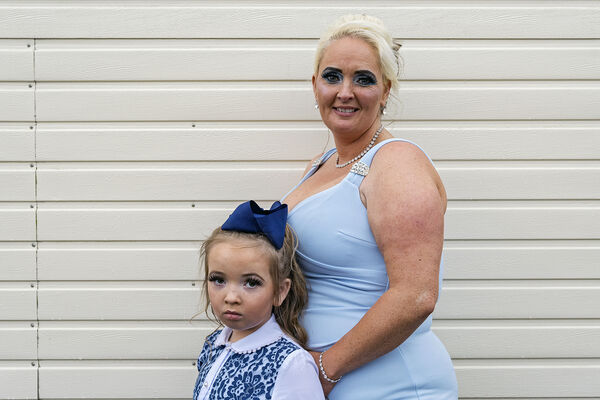
Channell With Her Mother, Galway, Ireland 2021
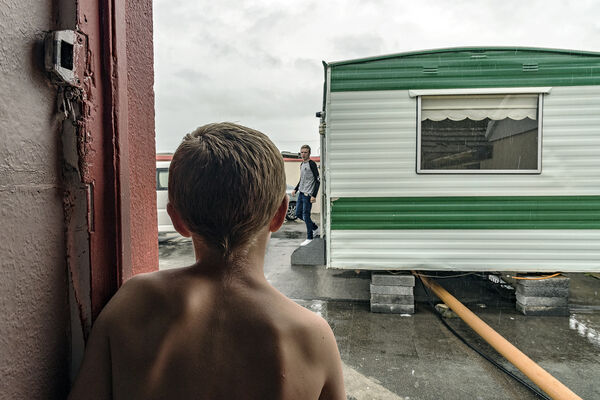
Edward and Gerry, Galway, Ireland 2019

Helen and Daughters, Galway, Ireland 2019

Ellie-May and Sister, Galway, Ireland 2019
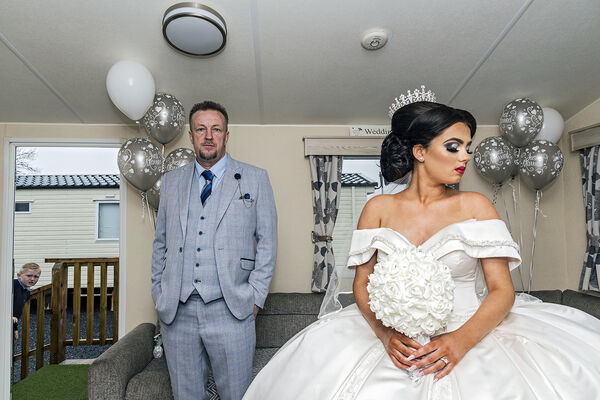
John with Her Daughter Naomi on Her Wedding, Galway, Ireland 2021
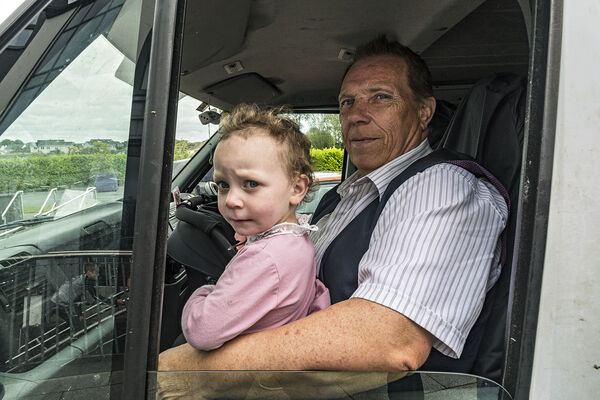
Grandfather and Granddaughter, Galway, Ireland 2019
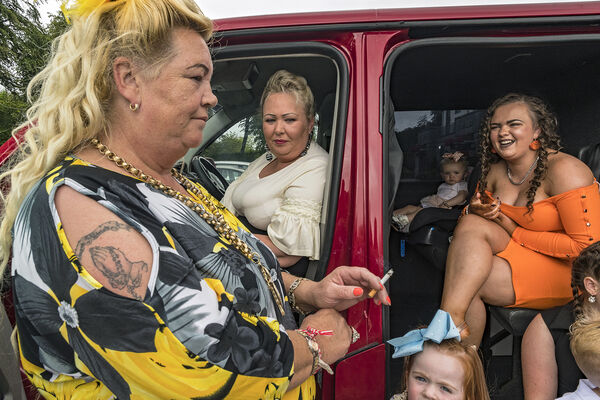
The Donoughue, Galway, Ireland 2019

Edward At Door, Galway, Ireland 2019

Edward Being Feisty, Galway, Ireland 2019
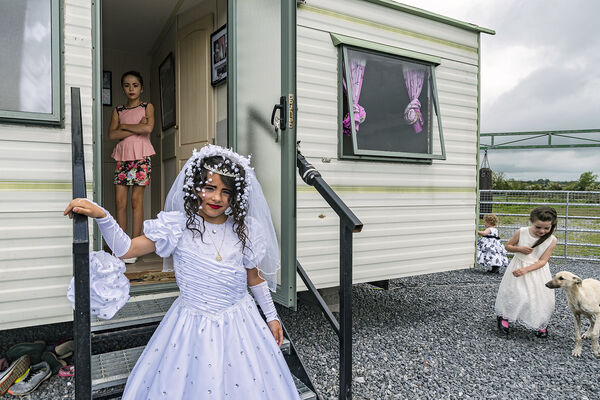
Nikita on Her First Holy Communion with Her Sisters, Tipperary, Ireland 2019
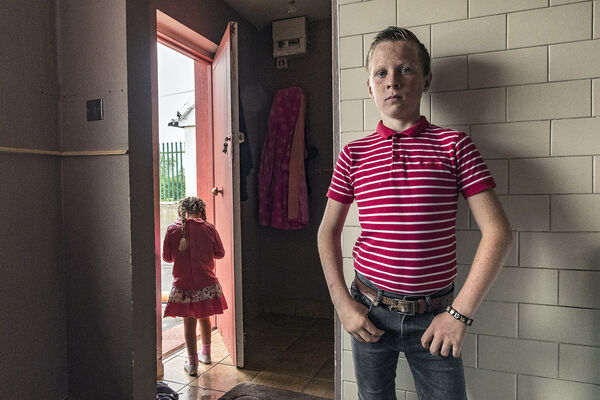
J.J. and Lillian, Galway, Ireland 2019

O'Reilly Brothers, Limerick, Ireland 2019
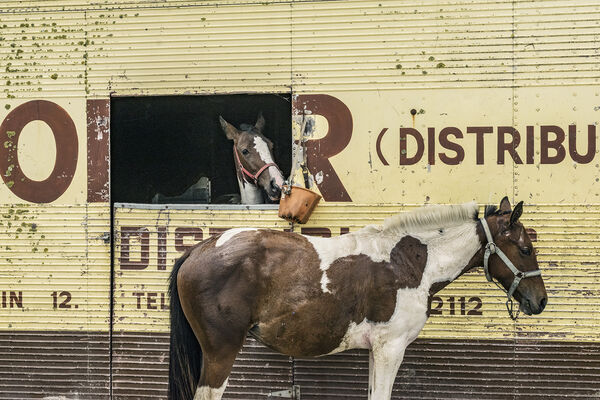
Two Horses, Limerick, Ireland 2018

Helen and Two Daughters, Galway, Ireland 2019
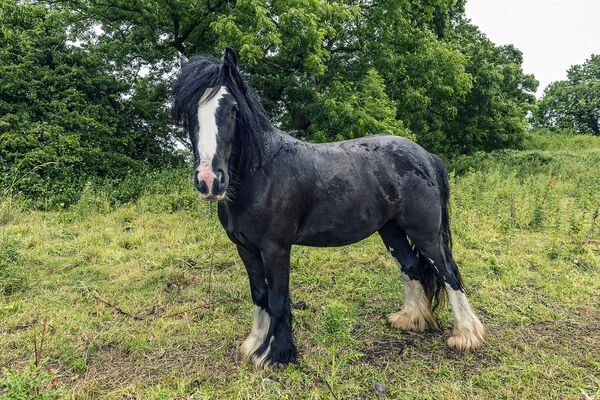
Gypsy Horse, Galway, Ireland 2019
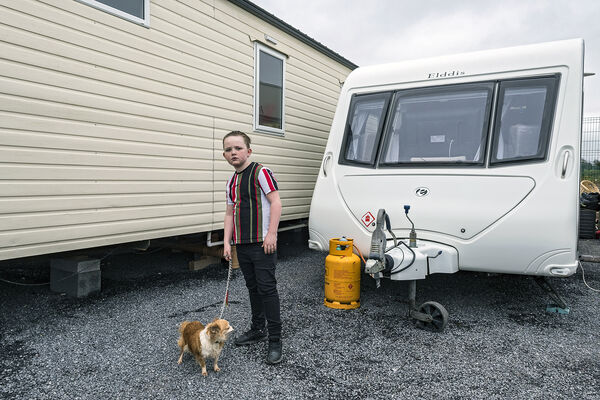
Morch With His Dog, Galway, Ireland 2021
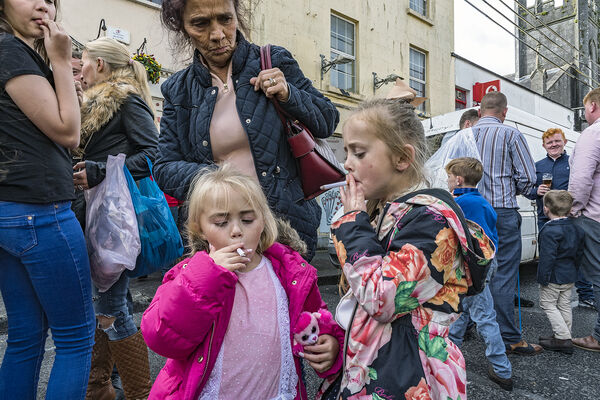
Toy Cigarettes, Galway, Ireland 2019 (no. 2)

Girl at Wedding, Tipperary, Ireland 2020
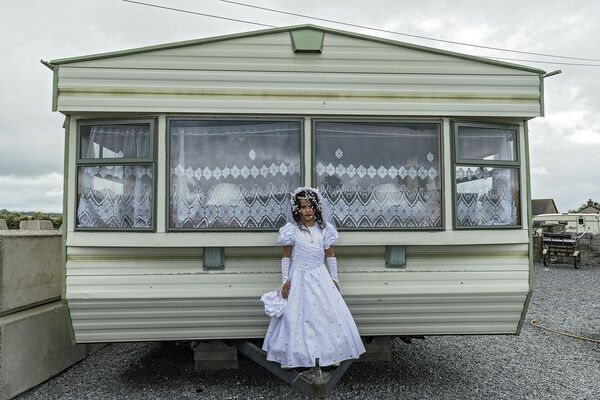
Nikita in Front of Her Home on Her First Holy Communion, Tipperary, Ireland 2019

Leanne's Fifth Birthday, Tipperary, Ireland 2019
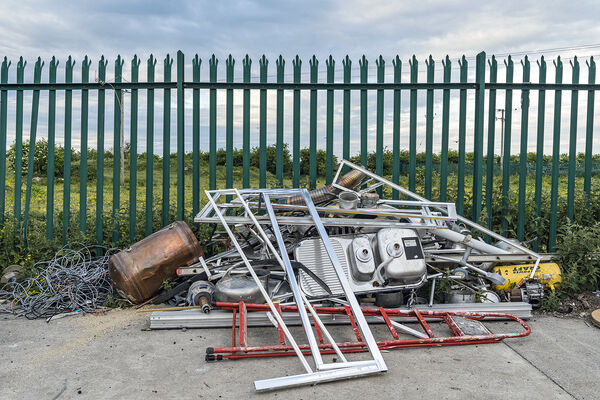
Ned's Scraps, Tipperary, Ireland 2020
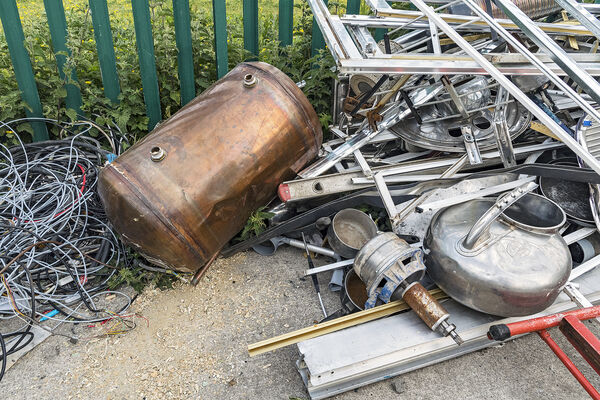
Ned's Scraps No.2, Tipperary, Ireland 2020
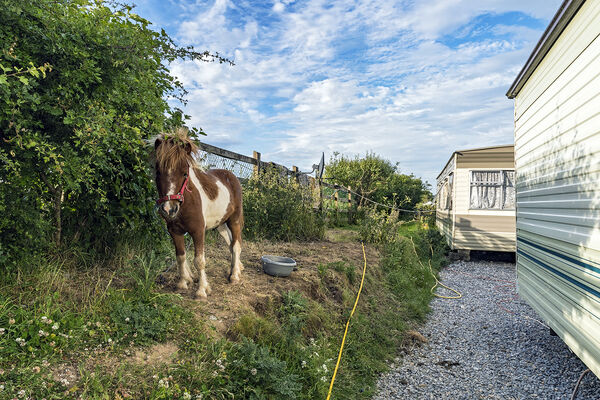
Pony and Caravans, Tipperary, Ireland 2020
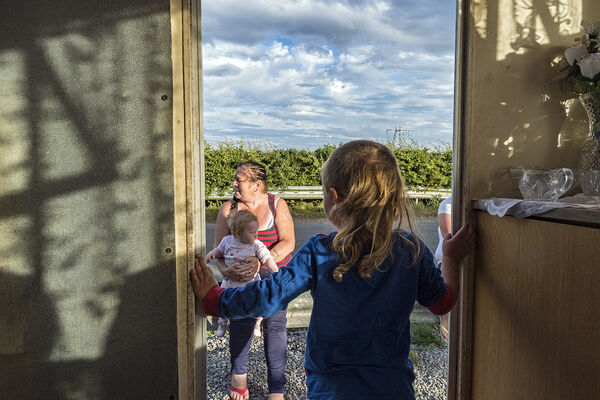
Willie at The Door, Tipperary, Ireland 2020
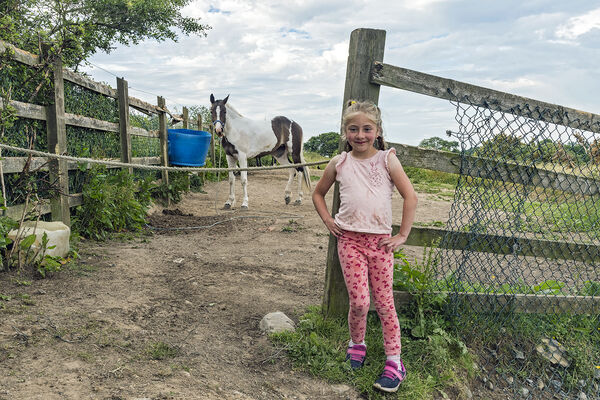
Katelyn. Tipperary, Ireland 2020

Katelyn at Door, Tipperary, Ireland 2020

Caroline Rides The Sulky, Ash Wednesday, Cork, Ireland 2020
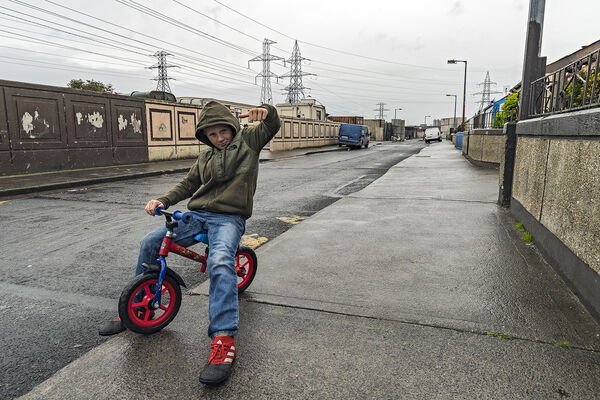
Boy on Small Bike, Dublin, Ireland 2019
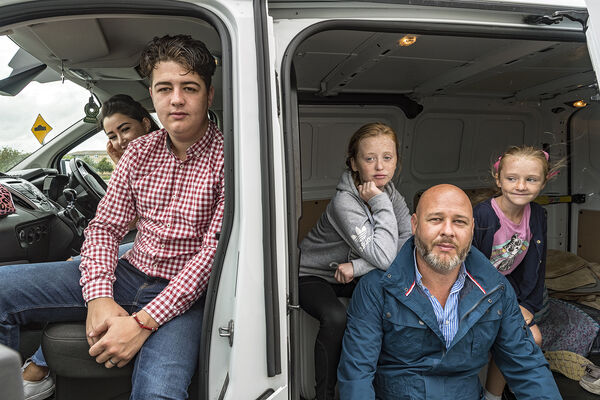
The McDonaghs, Dublin, Ireland 2019
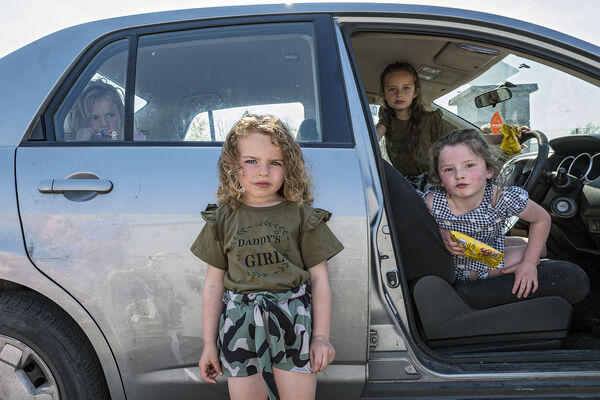
Faulkner Girls, Limerick, Ireland 2021

Wagon Builder's Shed, Tipperary, Ireland 2021
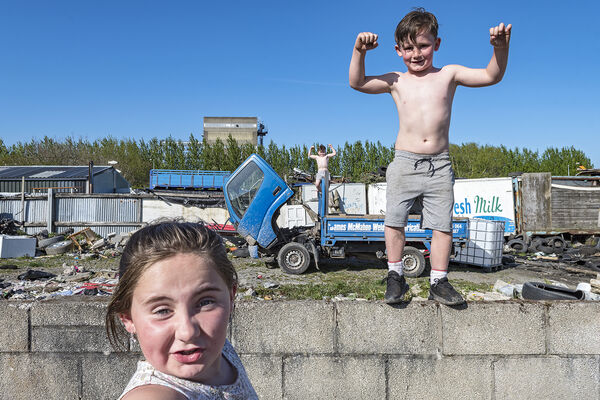
Cindyanna, Johnny and Fono, Limerick, Ireland 2021
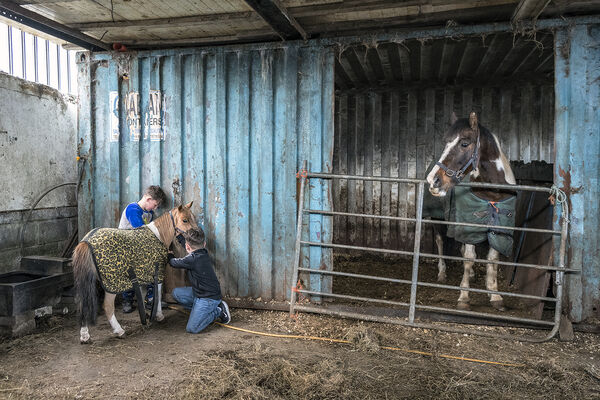
Johnny and Fono in Horse Stable, Limerick, Ireland 2021
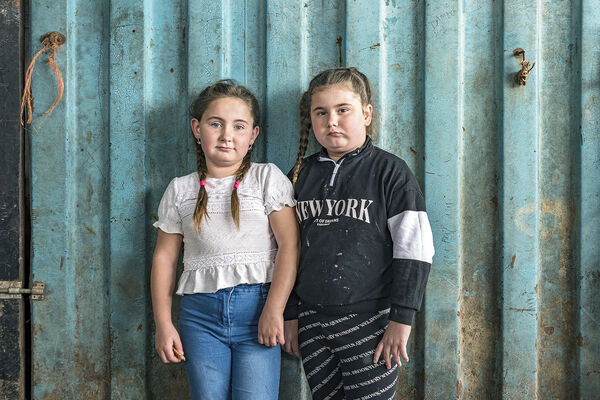
Cindy Anna and Antoinette, Limerick, Ireland 2021
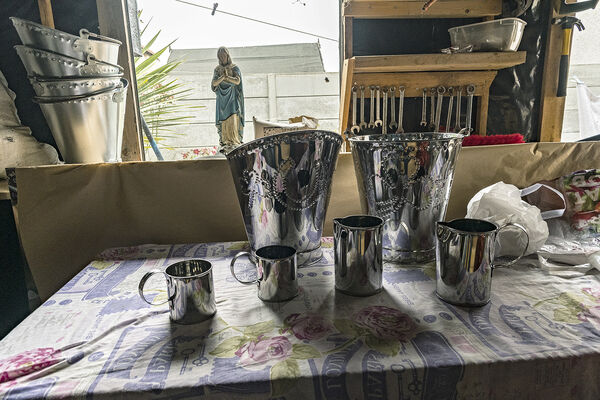
Inside a Tinsmith's Shed, Dublin, Ireland 2019
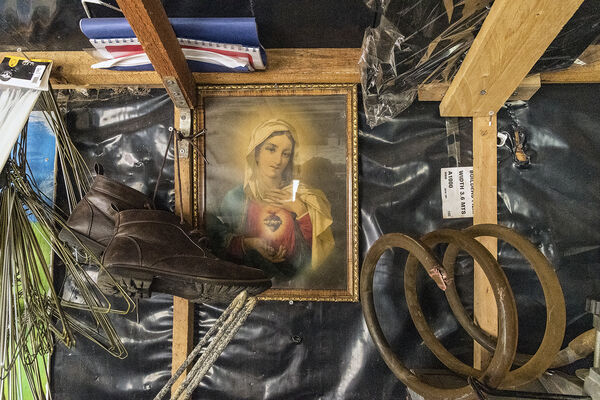
Holy Picture in A Tinsmith's Shed, Dublin, Ireland 2019
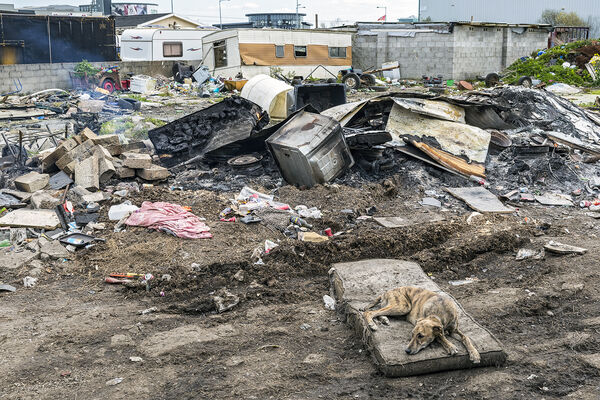
Lurcher on A Mattress, Limerick, Ireland 2021
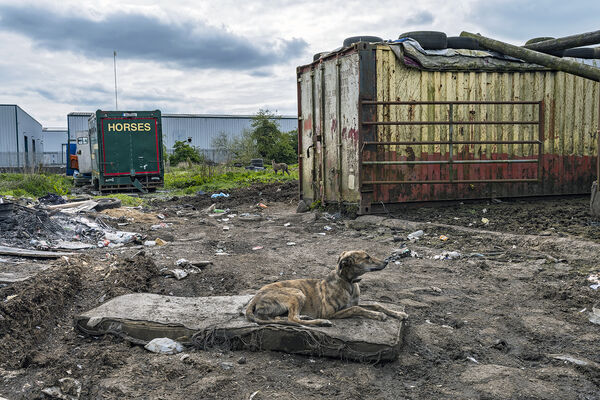
Lurcher on A Mattress No. 2, Limerick, Ireland 2021
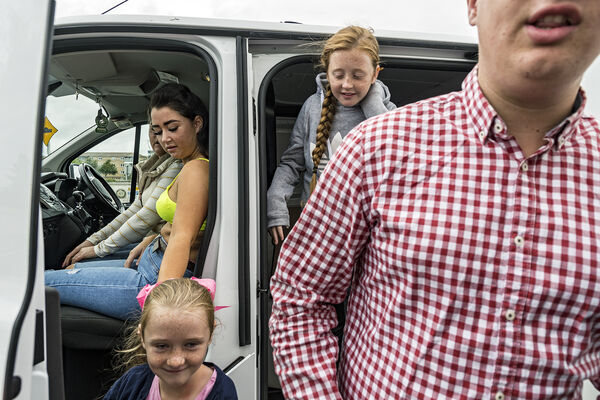
McDonagh Family, Dublin, Ireland 2019
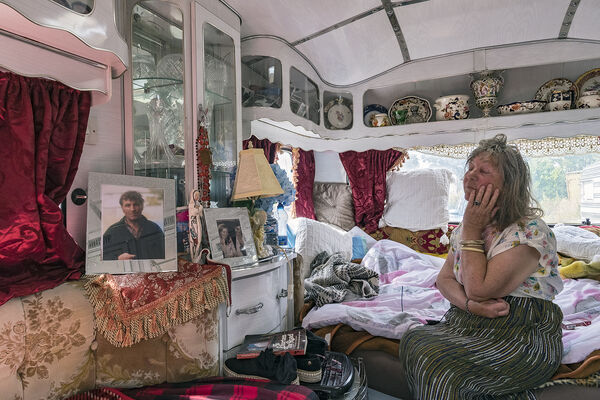
Christina Thinking of Her Recently Deceased Husband, Dublin, Ireland 2019
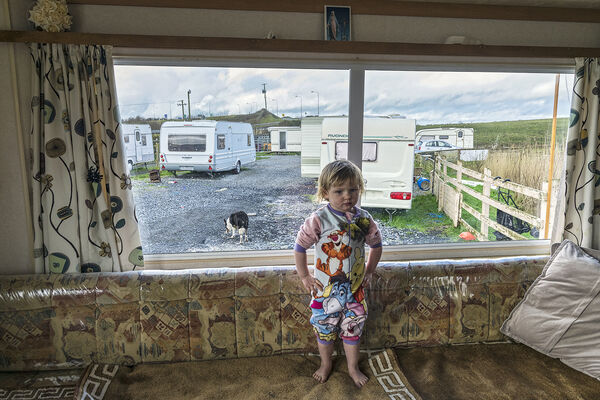
Girl in Caravan, Clare, Ireland 2018
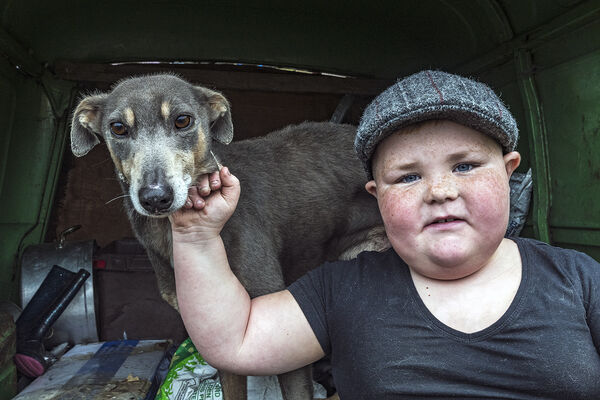
Boy with Lurcher, Tipperary, Ireland 2020
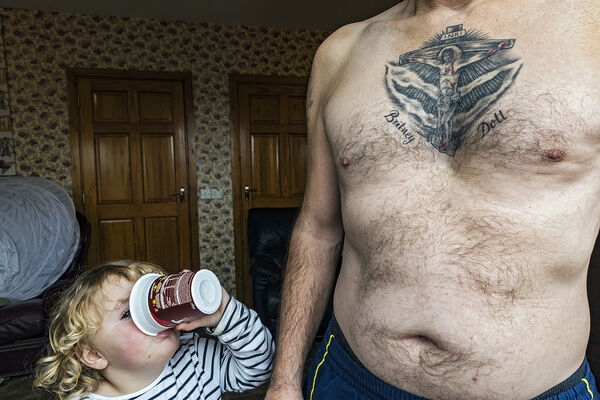
Girl and Grandfather's Tattoo, Tipperary, Ireland 2020

John, Lillian and Edward, Galway, Ireland 2019

Ned's Trotter Horse, Tipperary, Ireland 2020

Pricilla waiting for the rain to stop before her wedding, Tipperary, Ireland 2020

Brittany, Limerick, Ireland 2019

Desiree, Limerick, Ireland 2021
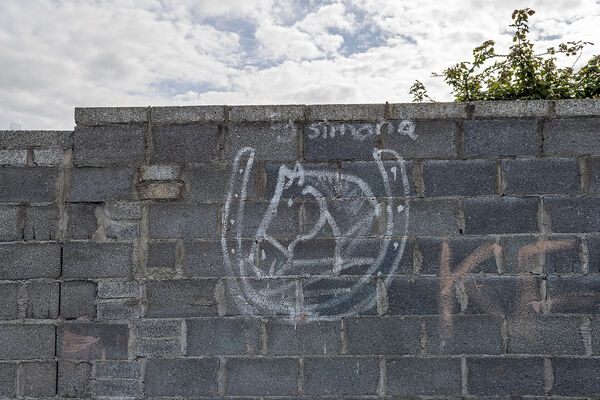
Graffiti, Limerick, Ireland 2021

Two Girls in Caravan, Tipperary, Ireland 2021
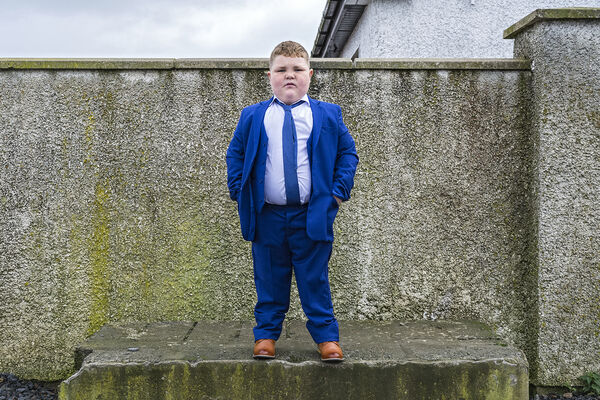
Blue Suit, Tipperary, Ireland 2020
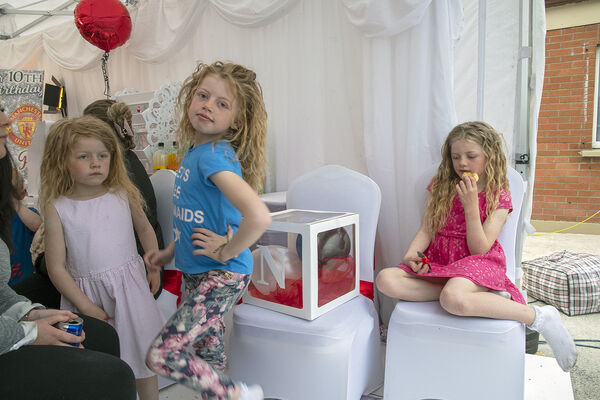
Clarke Sisters, Limerick, Ireland 2021
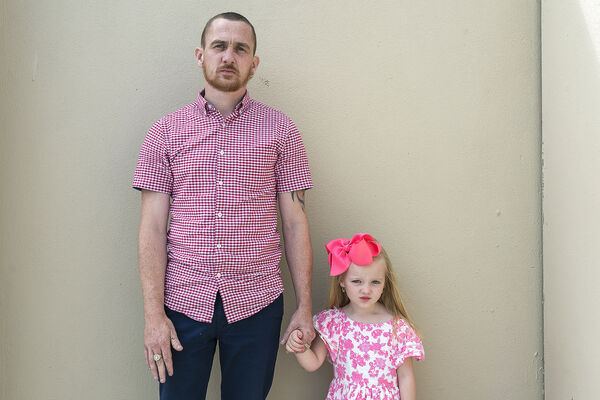
Kevin and His Daughter Sharon, Limerick, Ireland 2021

Laundry Line, Tipperary, Ireland 2021
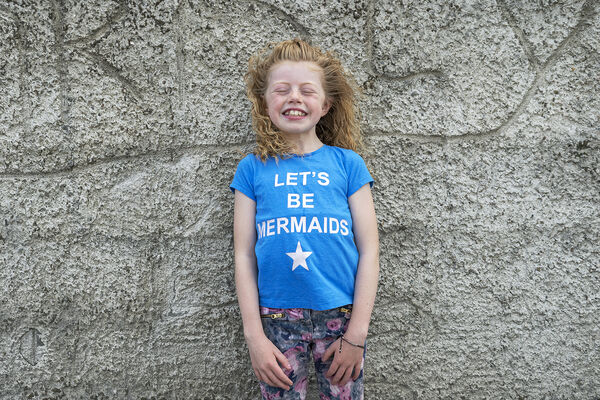
Let's Be Mermaids, Limerick, Ireland 2021

Boy With Lurcher, Tipperary, Ireland 2020

Brothers, Galway, Ireland 2022

Breda and Lilianna, Galway, Ireland 2022
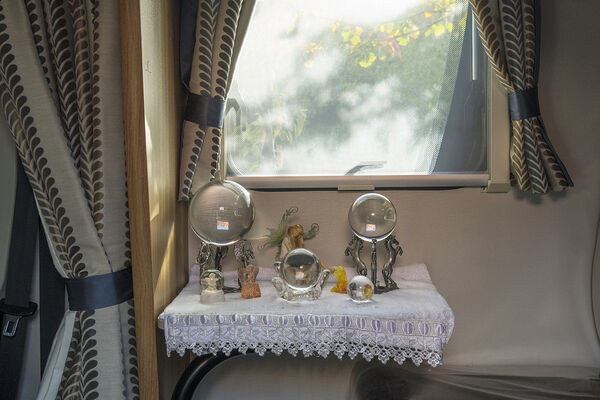
Gypsy Madam Gray's Crystal Balls, Galway, Ireland 2022

Girl with Glasses, Galway, Ireland 2022
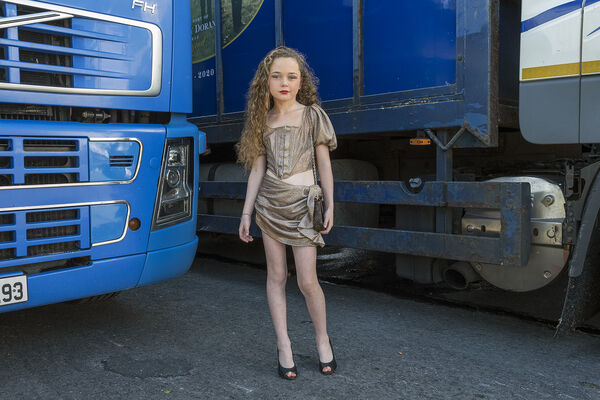
Lilianna, Galway, Ireland 2022
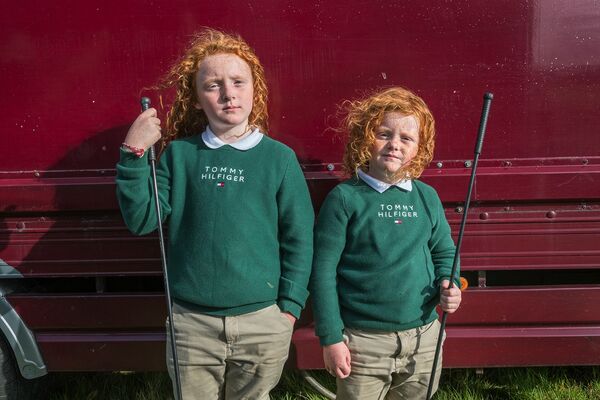
Dan and Alan, Galway, Ireland 2022
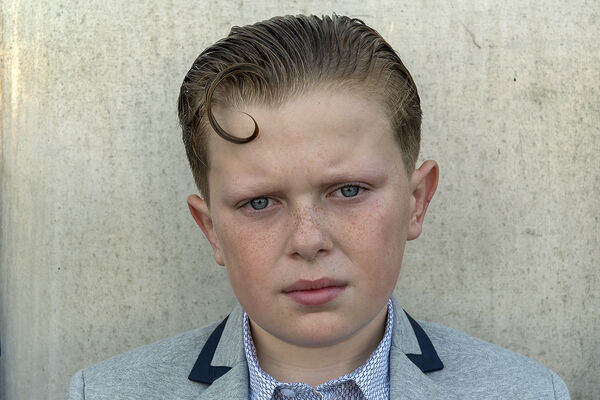
Boy with Teddy Boy Hairstyle, Galway, Ireland 2022
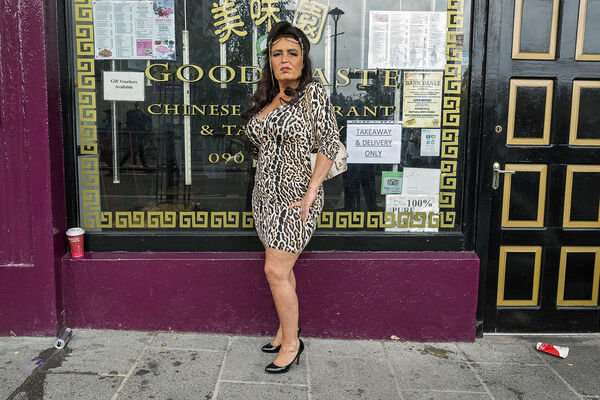
Doreen, Galway, Ireland 2022

Stall Merchant, Galway, Ireland 2022
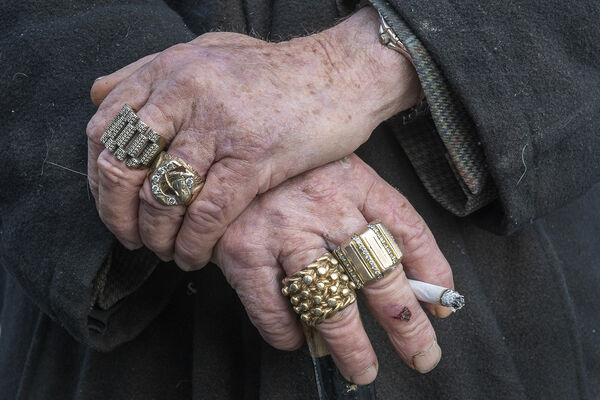
Gold Rings, Galway, Ireland 2022

Gold Rings and Horse, Galway, Ireland 2022
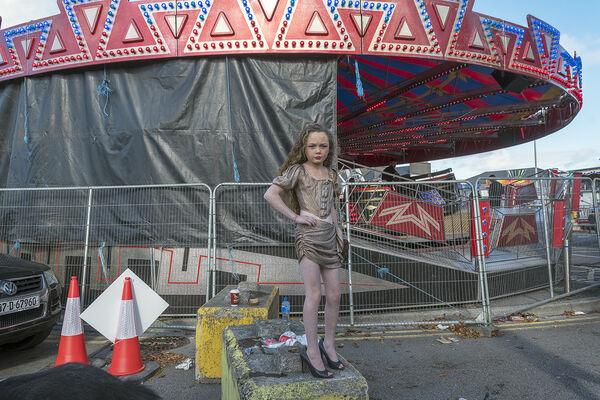
Lilliana at The Carnival, Galway, Ireland 2022
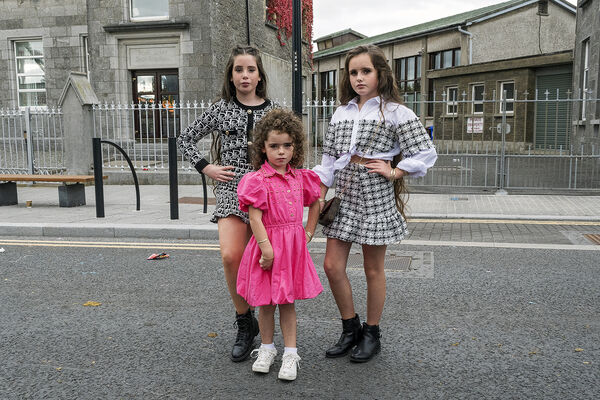
McGinley Sisters, Galway, Ireland 2022

Gold Moschino Belt, Galway, Ireland 2022
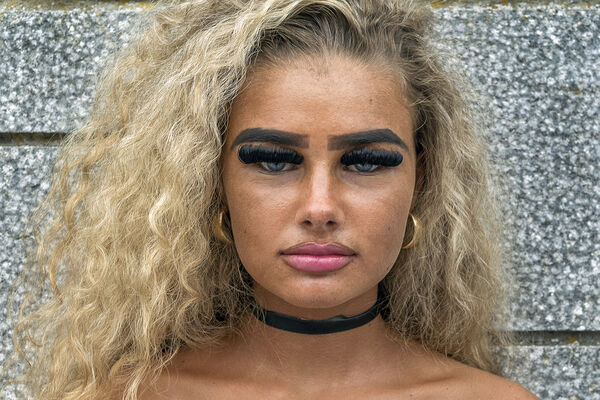
Girl with Makeup, Galway, Ireland 2022

Mullane Sisters, Galway, Ireland 2022
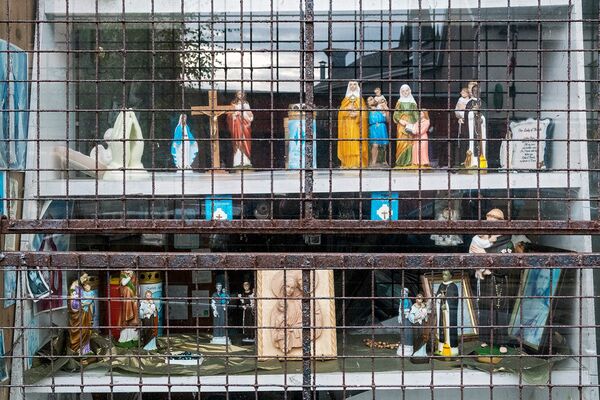
Religious Statues in Shop Window, Galway, Ireland 2022
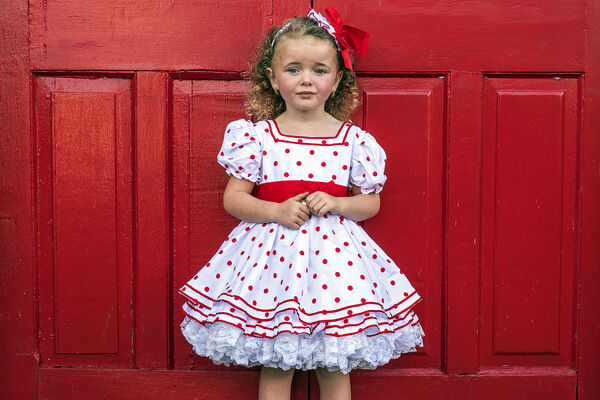
Ruby, Galway, Ireland 2022
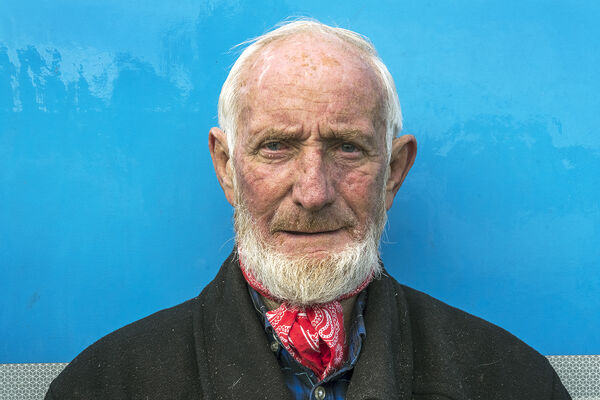
Tom, Galway, Ireland 2022

Girl with Ball Purse, Tipperary, Ireland 2022
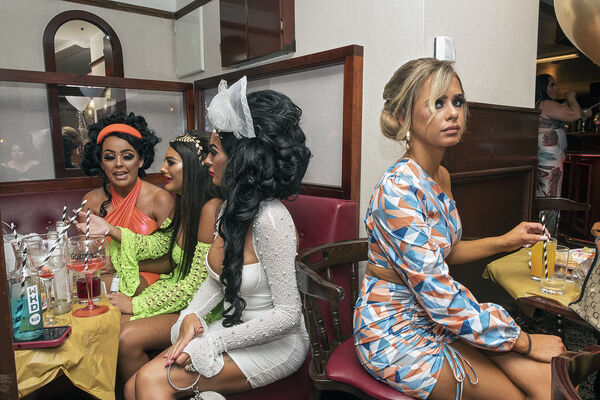
Birthday Party, Tipperary, Ireland 2022
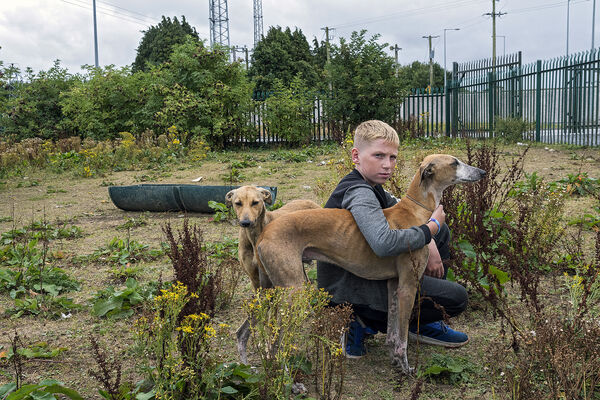
Ned with Lurcher, Tipperary, Ireland 2022

Pa and Michael, Tipperary, Ireland 2022

Boys and Ponies, Galway, Ireland 2022

Cleary Girls, Galway, Ireland 2022

Rocking Horse, Galway, Ireland 2022
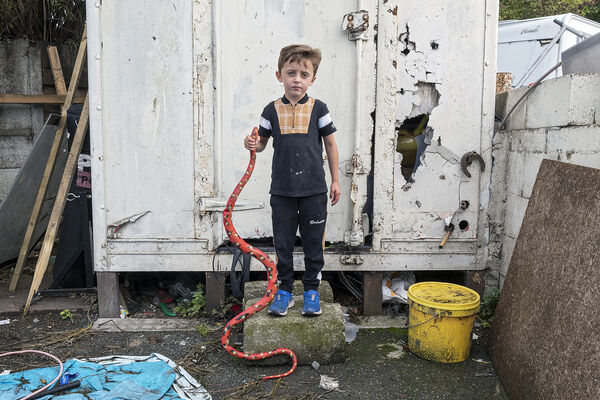
Boy with Rubber Snake, Dublin, Ireland 2022
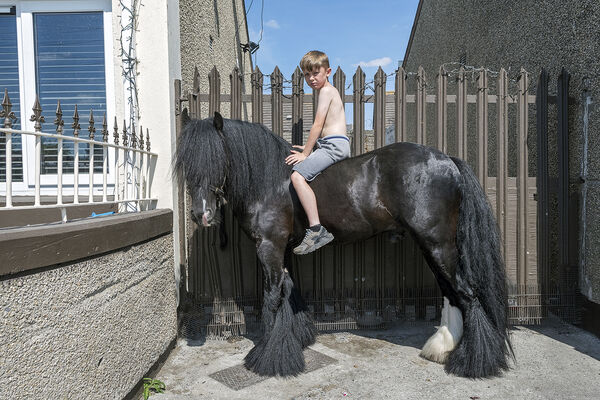
Boy on Black Gypsy Horse, Dublin, Ireland 2022

McInerney Sisters, Offaly, Ireland 2022
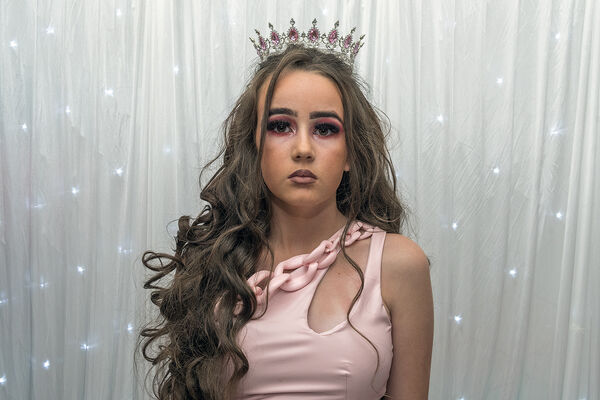
Hollie on her 10th Birthday, Limerick, Ireland 2022
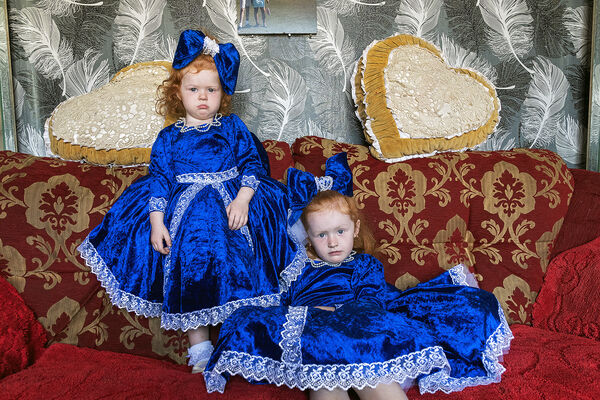
Dooley Sisters, Killarney, Ireland 2019

Rocky and Tom, roadside campsite, Tipperary, Ireland 2018
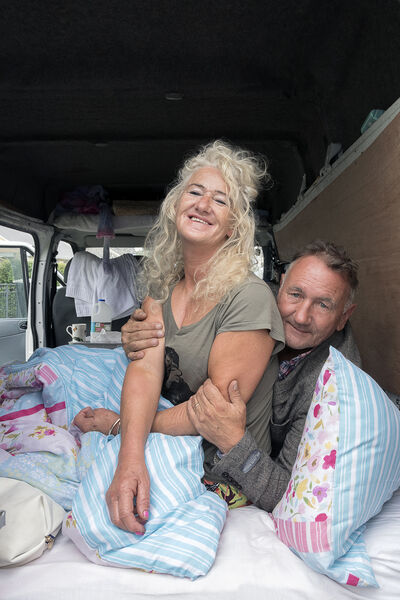
Bridget and James, Puck Fair, Kerry, Ireland 2018
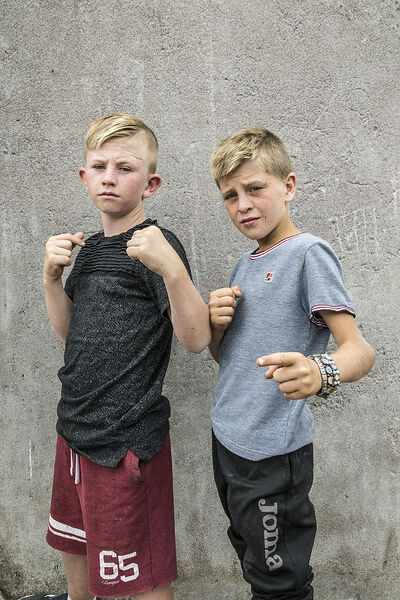
James and William, Cork, Ireland 2018

McCarthy Sisters, Cork, Ireland 2018

Pa with Gold Necklace, Tipperary, Ireland 2018

Girl with Doll at Ballinasloe Fair, Galway, Ireland 2018
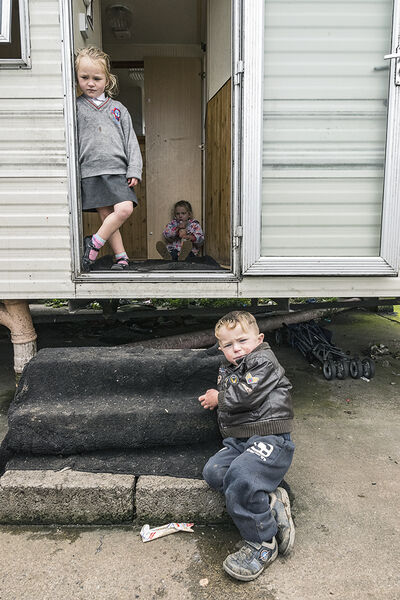
Reilly Siblings, Tipperary, Ireland 2018

Stacy, Clare, Ireland 2018
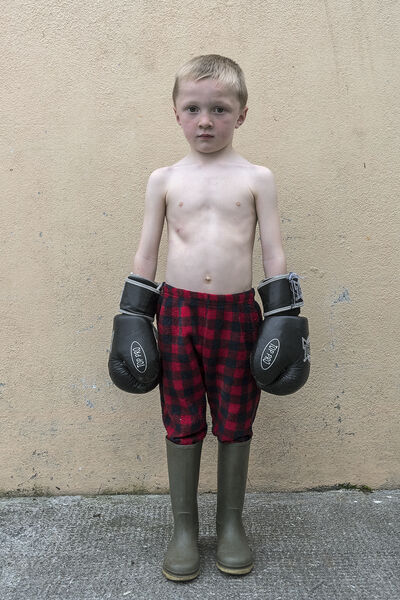
Paddy, Galway, Ireland 2019

Blue Balloon, Borris Fair, Carlow, Ireland 2019

Two Little Bridesmaids, Wexford, Ireland 2019
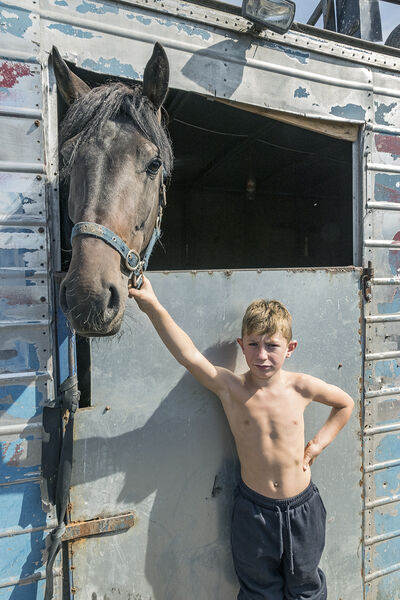
Ned and A Horse, Limerick, Ireland 2019
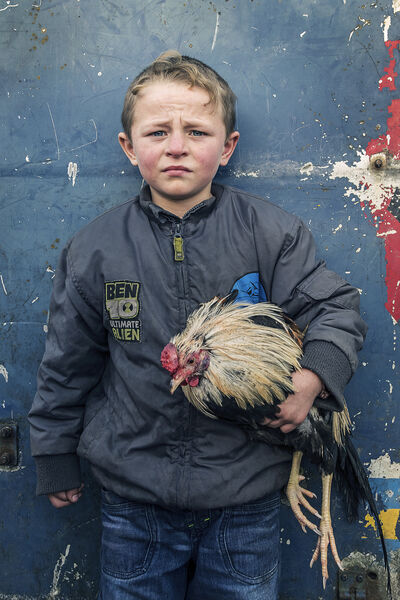
Pa with Rooster, Tipperary, Ireland 2019
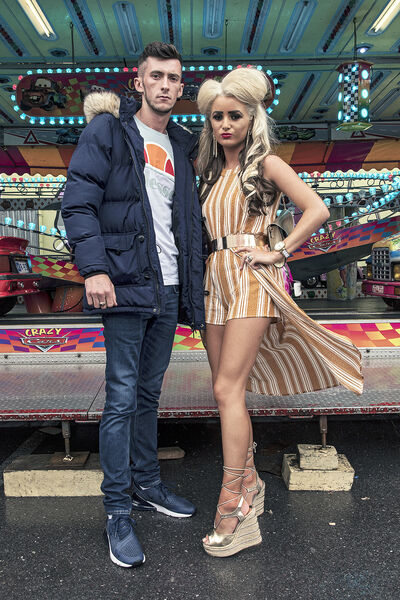
Patrick and Savannah, Puck Fair, Kerry, Ireland 2019

Reilly Sisters After School, Limerick, Ireland 2018
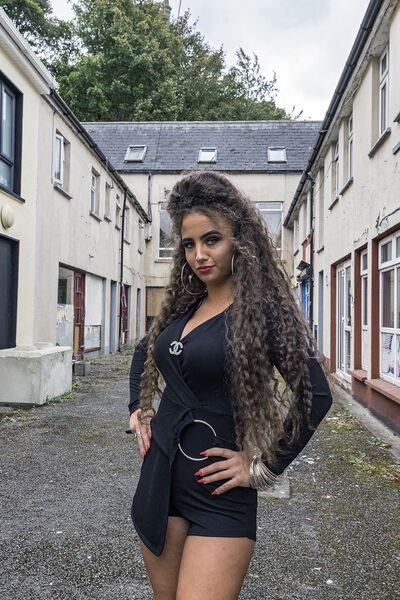
Girl with Many Bracelets, Galway, Ireland 2019
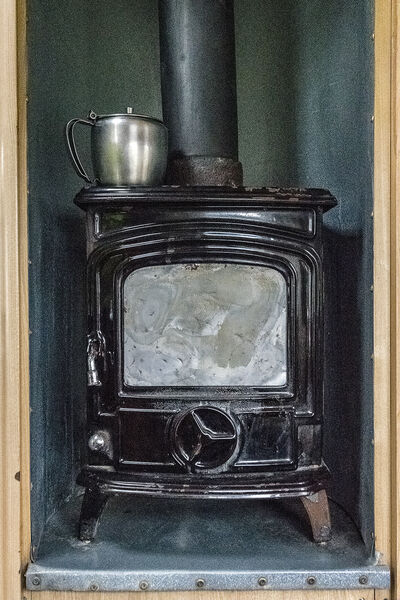
Jim and Ally Reilly's Stove in Their Caravan, Tipperary, Ireland 2019
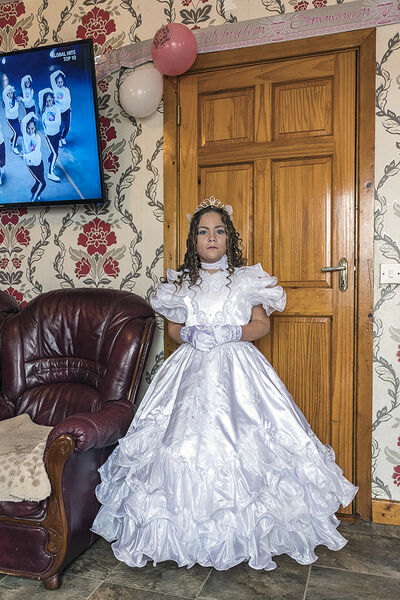
Nita on her First Holy Communion, Tipperary, Ireland 2019

Philomena, Red Skirt, Tipperary, Ireland 2019
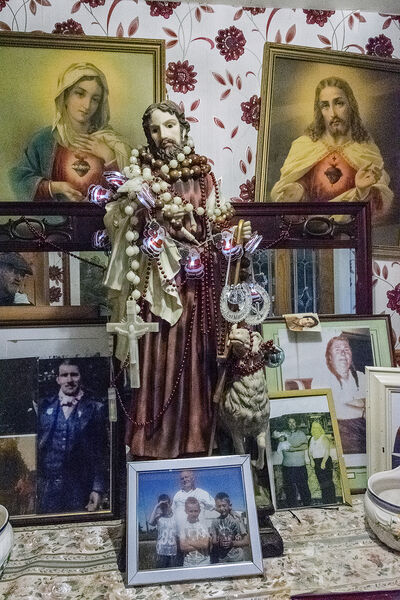
Still Life in Jim and Maggie's Home, Tipperary, Ireland 2018

Boy with Four Cans, Limerick, Ireland 2019
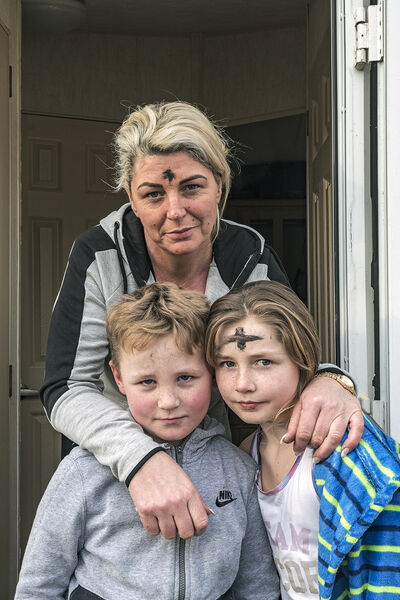
Mother and Her Children, Ash Wednesday, Cork, Ireland 2020

Details on A Pony, Cork, Ireland 2020

